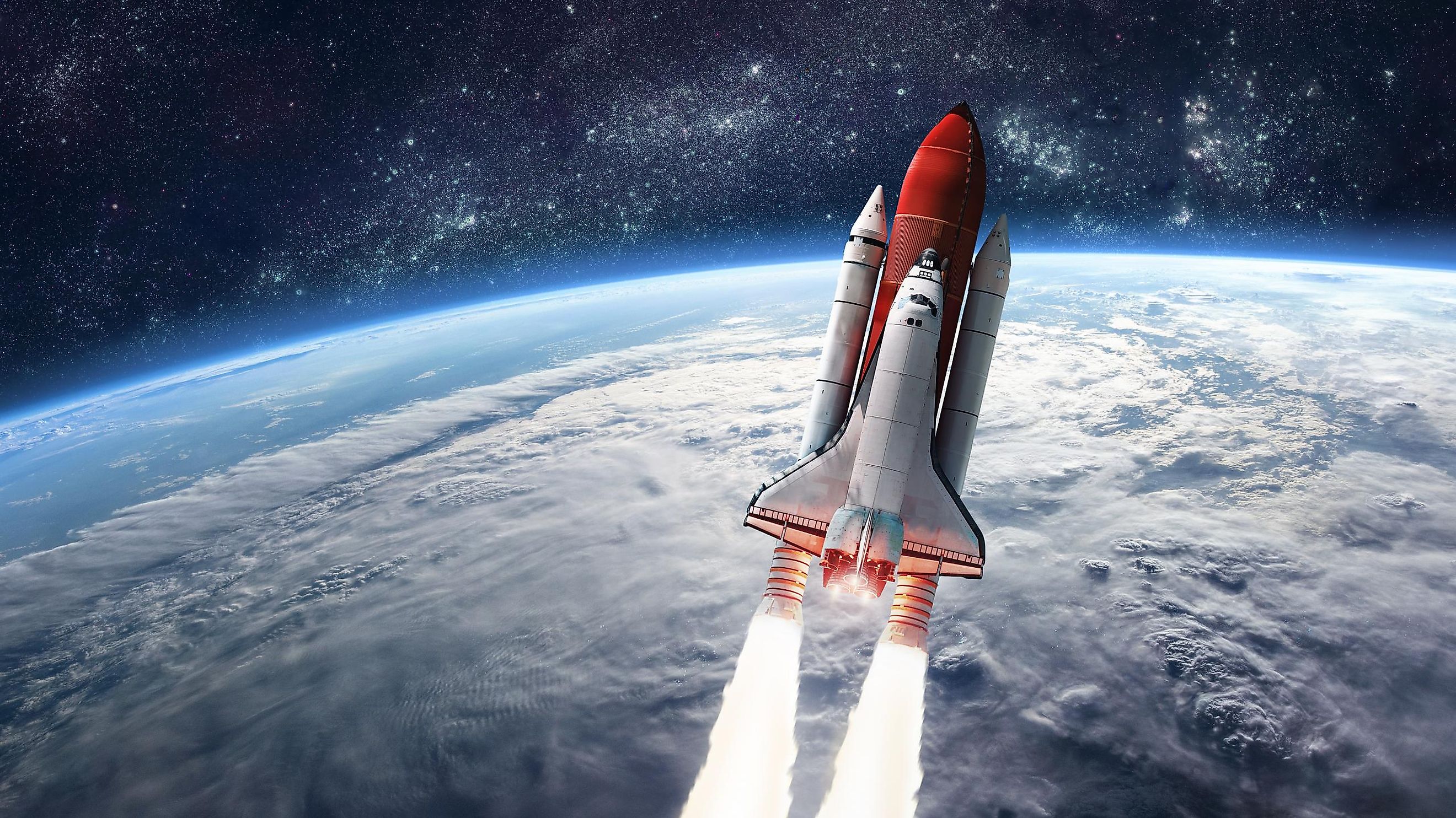
- How Long Would It Take To Travel To Each Planet?
Our solar system is home to eight individual planets . Moving outwards from the sun , they are Mercury, Venus, Earth, Mars, Jupiter, Saturn, Uranus, and Neptune. Some of these worlds are far closer than others, and the time it would take to travel to each planet is different for every one of them. Just how long would it take to travel to each planet?

Mercury and Venus
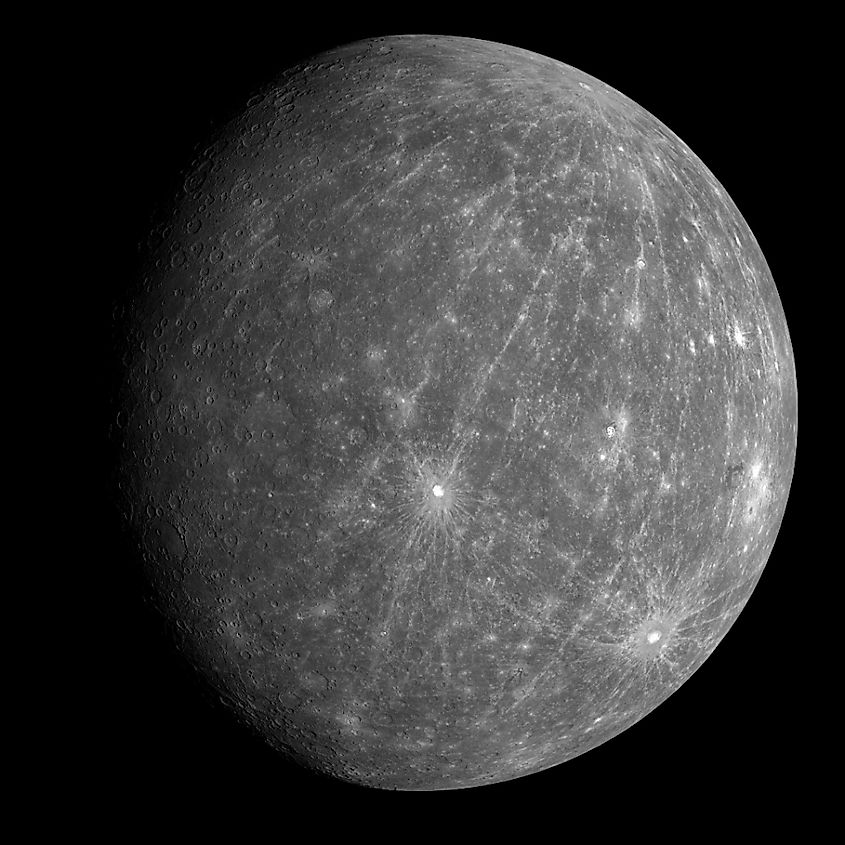
How long it would take to travel to the planets is dependent upon a number of factors, such as the route you take, the spacecraft you use, and where the planets are located in their respective orbits . To simplify things, we will assume that the route you take is a direct one and that the planets are at their closest approach to one another. Furthermore, we will assume that any spacecraft we use to travel to the planets is as fast as the New Horizons spacecraft, which happens to be one of the fastest human-made objects ever built. At its fastest, New Horizons reached a speed of about 50,000-miles per hour (80,000-kilometres per hour). Since Mercury and Venus are the closest planets to Earth , the time it would take to travel to them will be the shortest. At its closest approach, Mercury is about 48-million miles (77-million kilometres) from Earth. To calculate time, we simply divide distance by velocity, so in this case we divide 48-million miles by 50,000-miles per hour, giving us 960-hours of travel time. Divide this by 24-hours, and we get the number of days it would take to get to Mercury, which ends up being 40-days. When Venus is at its closest approach to Earth, it is about 38-million miles (61-million kilometres) away, and so it would take about 32-days to get to Venus.
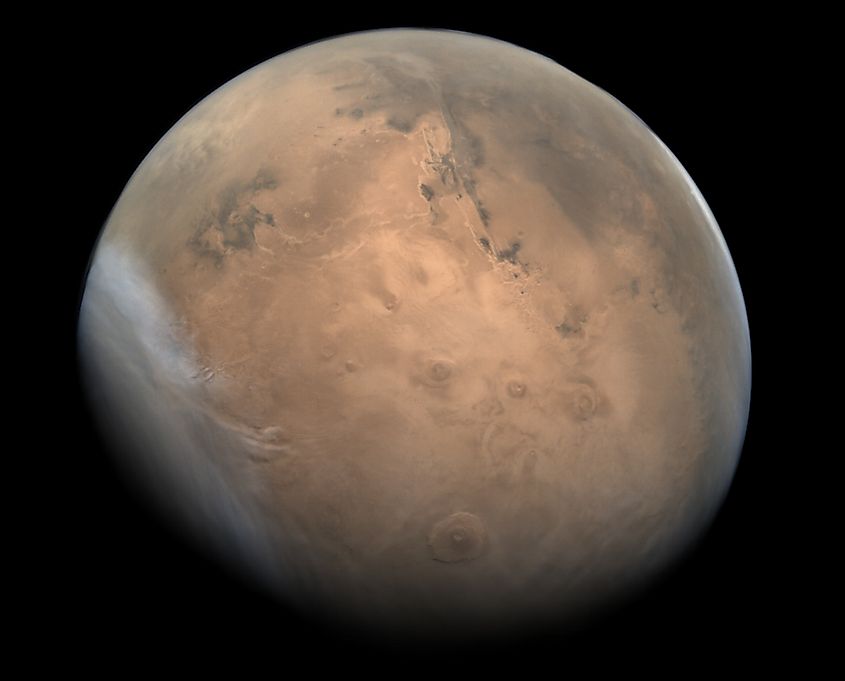
Mars is the most frequently visited planet in our solar system. While humans have yet to land on the Martian surface, space agencies have sent a number of rovers , landers, and satellites to study the Red Planet. During its closest approach, Mars is about 51-million miles (82-million kilometres) away from Earth. Moving at a speed of 50,000-miles per hour, it would take you about 42.5-days to reach Mars.
Jupiter and Saturn
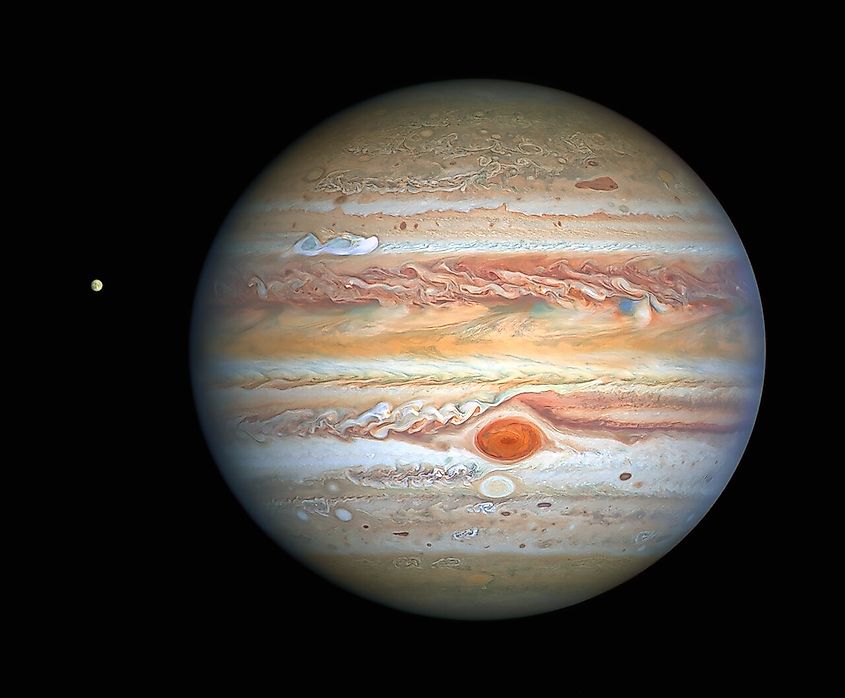
Beyond the orbit of Mars is the realm of the gas giants . Beyond Mars, the gas giants are much further away than their rocky counterparts. Jupiter is the closest gas giant to Earth, yet even at its closest approach it is still 367-million miles (590-million kilometres) away from our world. At this distance and moving at a speed of 50,000-miles per hour, it would take you 306-days to reach Jupiter. Saturn , meanwhile, is much further away than even Jupiter. At its closest approach to Earth, Saturn is 746-million miles (1.2-billion kilometres) away. At this distance, it would take you 622-days or 1.7-years to reach Saturn.
Uranus and Neptune
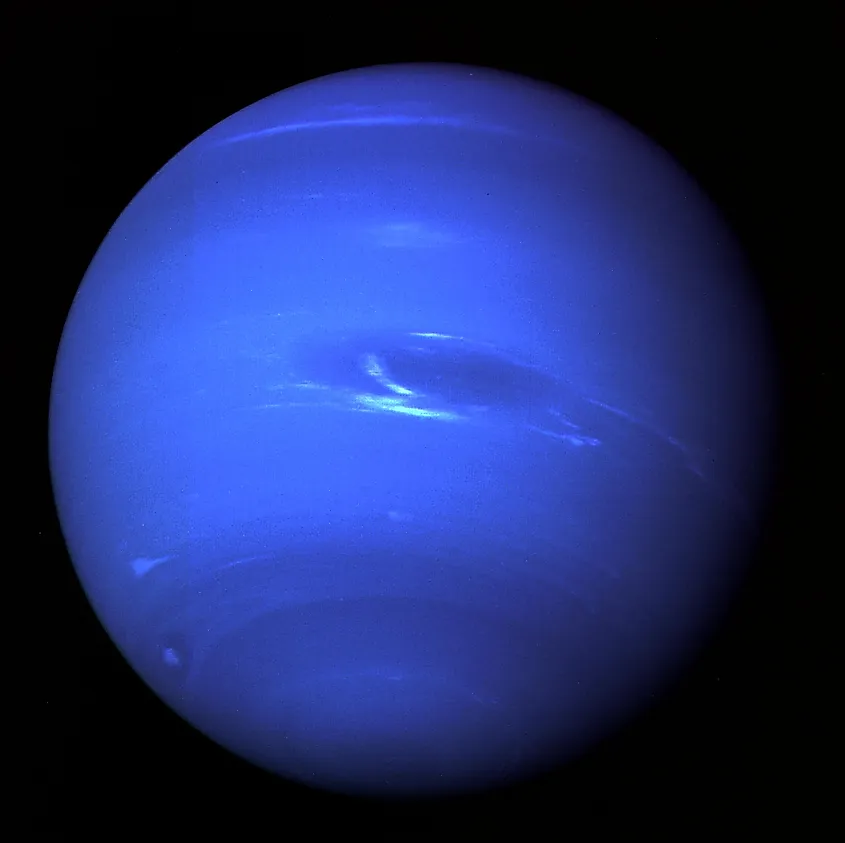
Beyond Jupiter and Saturn are the two outermost planets of our solar system, Uranus and Neptune . These two worlds are so far away from us that they are the only two planets not visible to the naked eye. At its closest approach to the Earth, Uranus is located a staggering 1.7-billion miles (2.7-billion kilometres) away. Travelling in a spacecraft moving at 50,000-miles per hour, it would take you 1,416-days or 3.88-years to reach Uranus. When Neptune is at its closest approach, the distance between Earth and Neptune is 2.7-billion miles (4.3-billion kilometres), and so it would take 2,250-days or 6.16-years.
Planetary Travel Time
More in science.
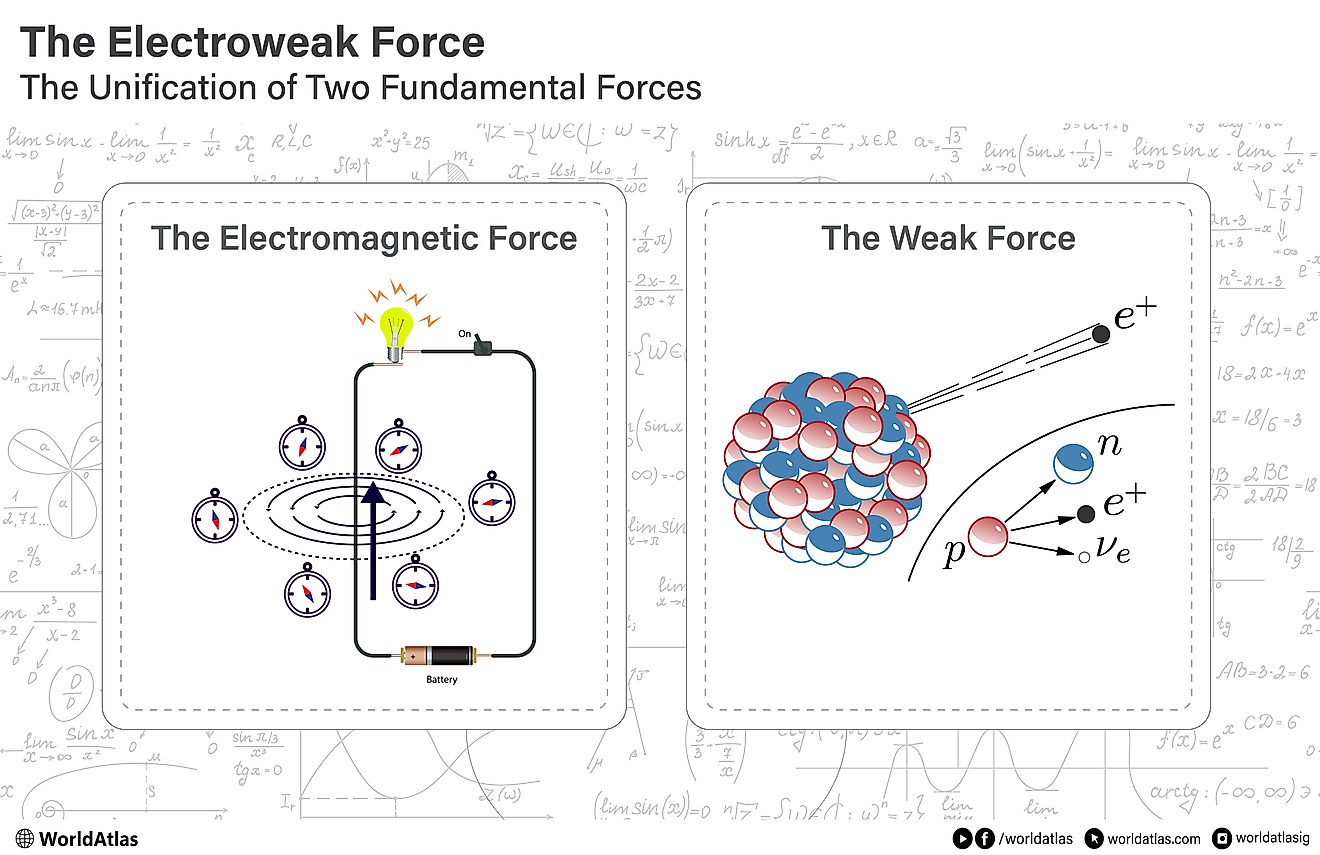
The Two Sides of the Electroweak Force
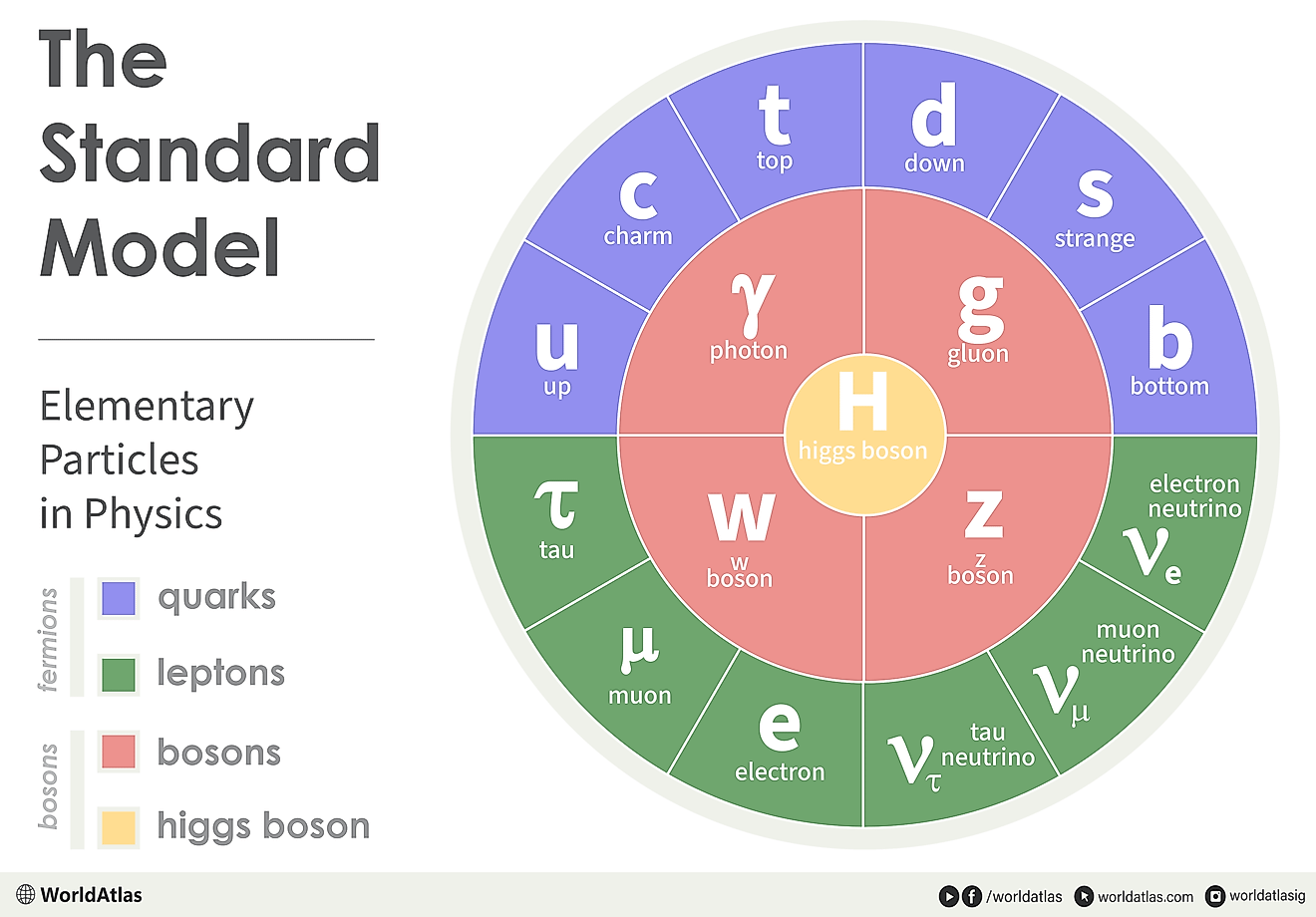
The Standard Model of Particle Physics
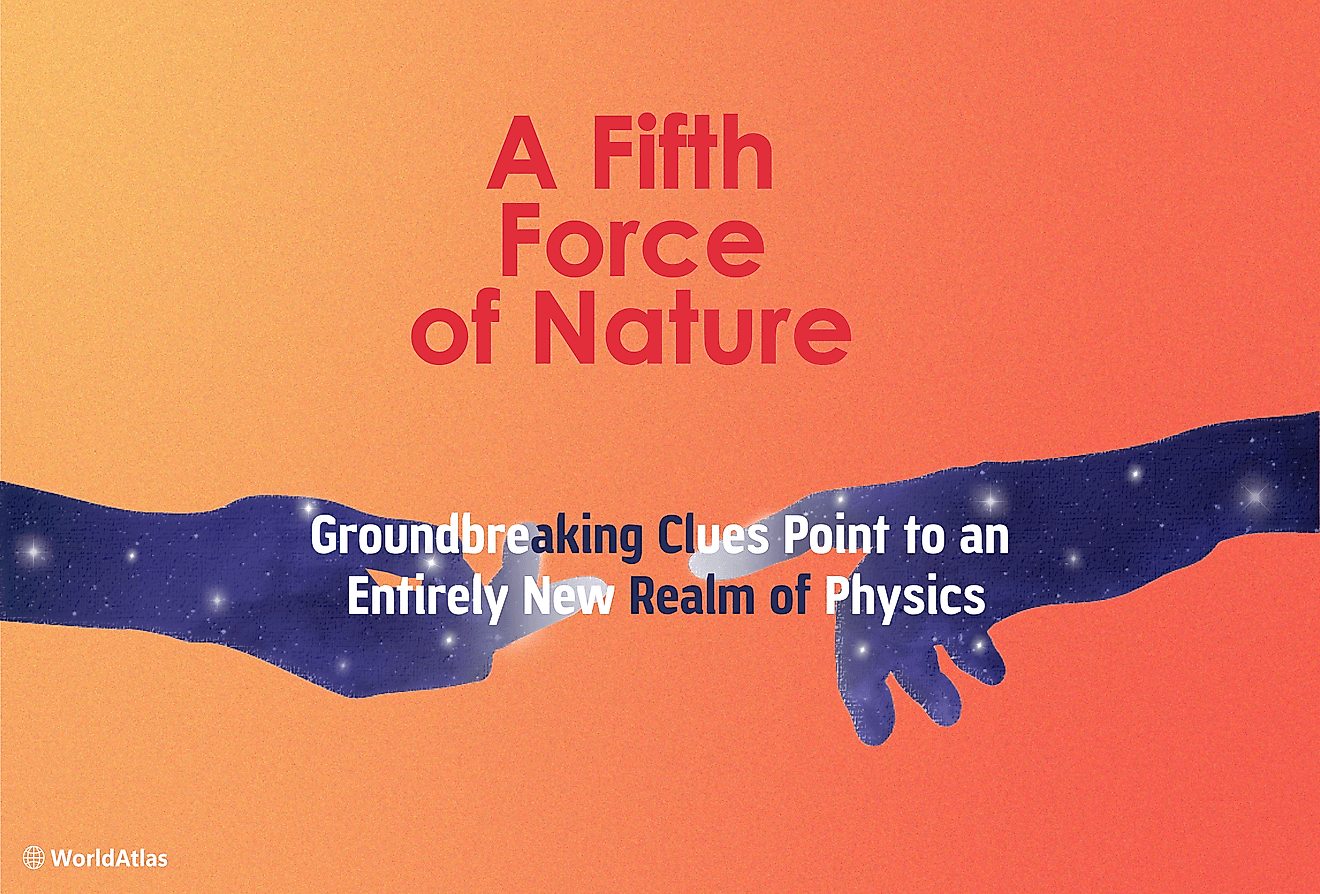
Is There A Fifth Force Of Nature?
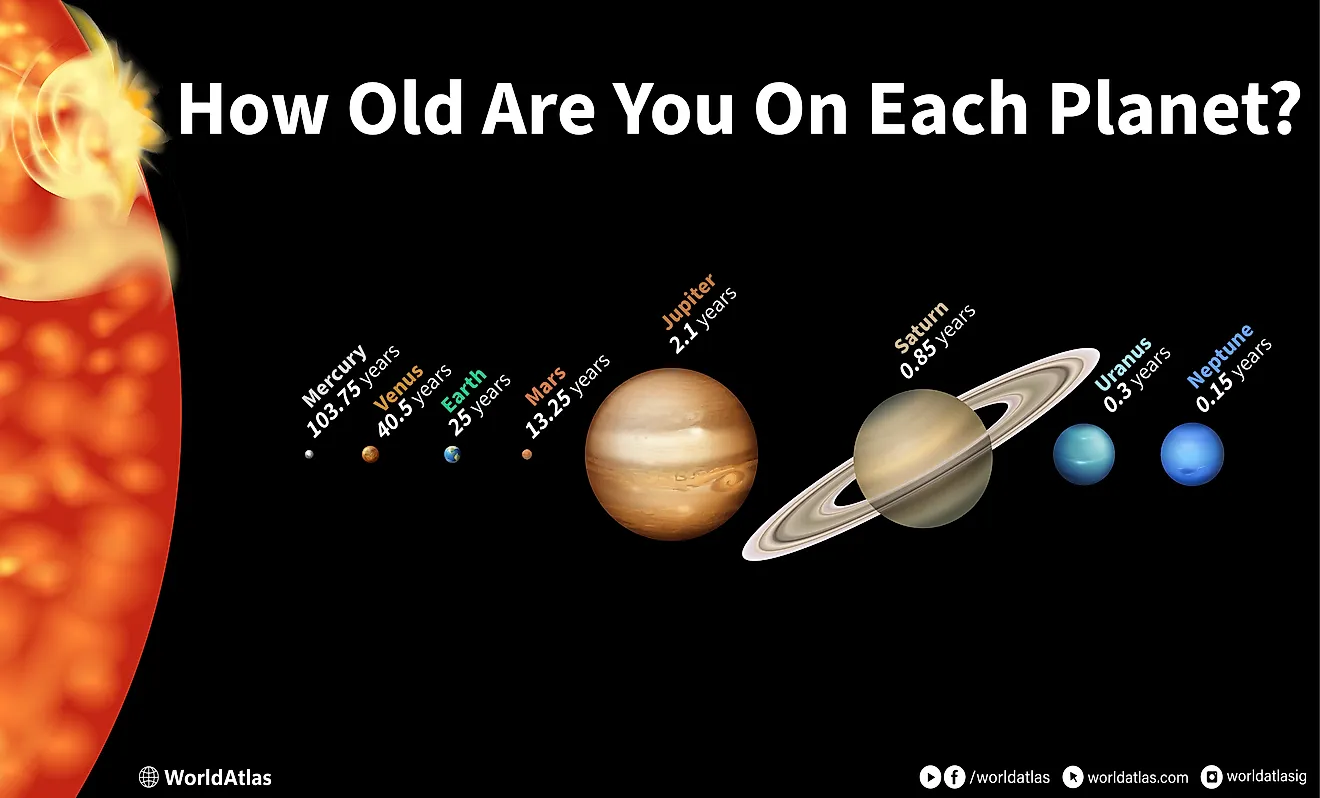
How Old Are You On Each Planet?
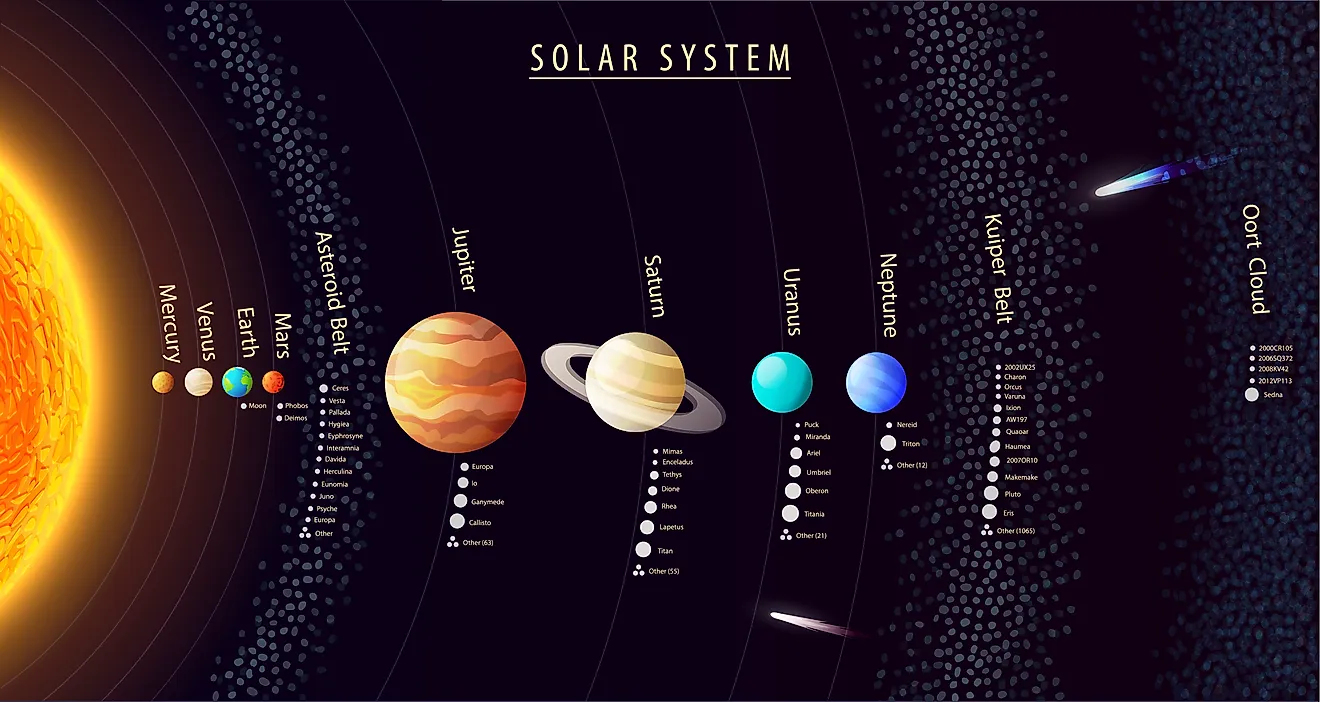
What Lies Beyond Pluto?
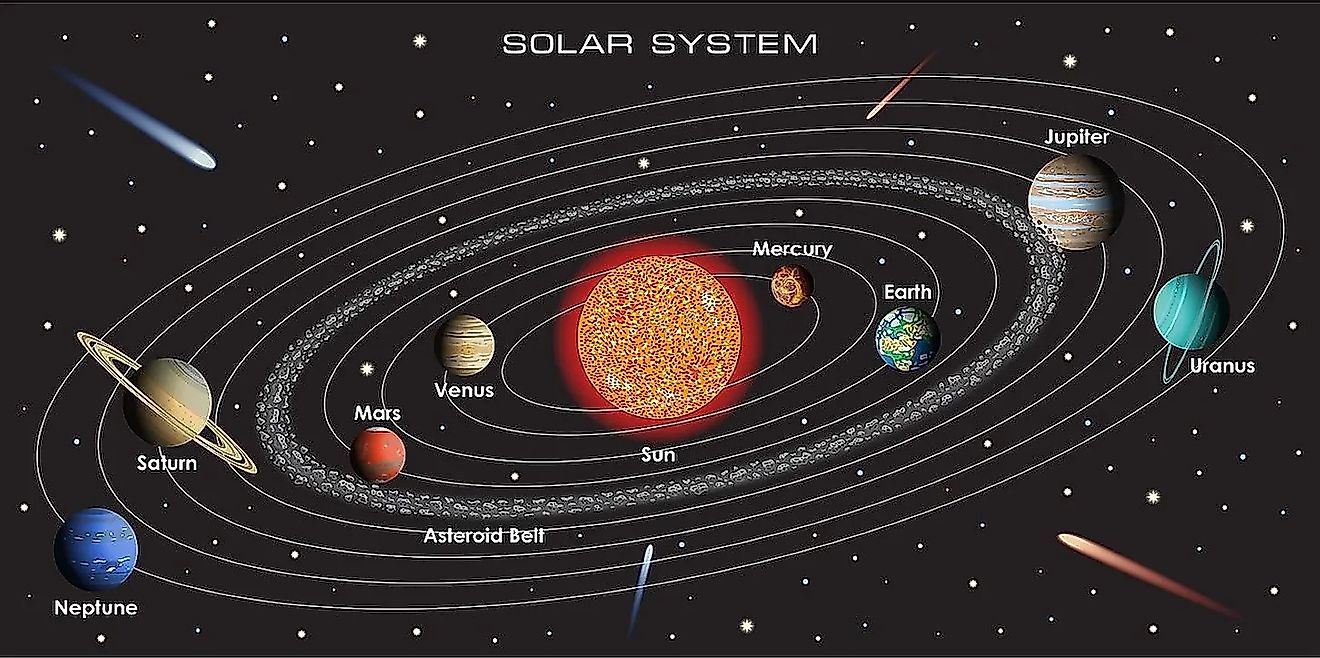
What Is the Length of a Year on Each Planet?

What Is the Eye of a Hurricane?

The Strongest And Deadliest Hurricanes Ever Recorded
Travel to Saturn: Duration Explained
Have you ever wondered how long it would take to get to Saturn? The journey from Earth to Saturn is a fascinating topic that revolves around various factors, such as distance, speed, and the intricate path that spacecraft must follow. Let’s explore the estimated travel time and the challenges involved in this incredible space adventure.

Key Takeaways:
- The duration of a journey to Saturn depends on factors like distance, speed, and the trajectory chosen.
- Spacecraft like Voyager took approximately 3 years and 2 months to reach Saturn, utilizing gravitational assists.
- The distance from Earth to Saturn is around 1.429 billion kilometers (890 million miles).
- Space travel presents challenges, including long-duration journeys and the need for careful mission planning .
- The future holds the promise of advancements in propulsion technology for shorter travel times to destinations like Saturn.
Factors Influencing Travel Time
The duration of a journey to Saturn is influenced by several factors. These factors include the speed of the spacecraft, the distance traveled , the route taken, and the gravitational pulls from objects in the solar system.
The speed of the spacecraft plays a significant role in determining the travel time. Higher speeds can lead to shorter overall durations. The distance traveled is another crucial factor. Larger distances require more time to cover, resulting in longer travel times.
Space travel rarely follows a straight line between two destinations. Instead, spacecraft often take advantage of gravitational pulls from objects like planets or moons to increase their speed. These gravitational assists can significantly impact the travel time, allowing spacecraft to move faster and reach their destination more efficiently.
When planning a journey to Saturn, it is essential to consider the need for deceleration when reaching the destination. Spacecraft must slow down and properly align with the gravitational field of Saturn, which adds to the overall travel time.
“The speed of the spacecraft, the distance traveled , the route taken, and the gravitational pulls all have a significant impact on the travel time to Saturn .”
Understanding these factors is crucial for mission planning and ensuring that spacecraft can reach Saturn within the desired timeframe. By optimizing speed, distance, route , and gravitational assists, scientists and engineers can reduce travel time and increase efficiency in space travel.
The Speed of Spacecraft
The speed of a spacecraft is a fundamental factor influencing travel time. Higher speeds can significantly reduce the overall duration of the journey to Saturn. Spacecraft like the Voyager missions to Saturn achieved sustained speeds of approximately 17 kilometers per second (10.5 miles per second).
These impressive speeds were made possible through the use of gravitational assists from other objects in the solar system, allowing the spacecraft to gain momentum and cover larger distances in less time.
The Distance Traveled
The distance traveled is another critical factor that affects the overall travel time to Saturn . Larger distances require more time to cover, resulting in longer journeys. The average distance from Earth to Saturn is approximately 1.429 billion kilometers (890 million miles).
When planning a journey to Saturn, the distance must be taken into account to ensure that the spacecraft has enough fuel and resources to complete the journey within a reasonable timeframe.
The Route Taken
The route taken during space travel is rarely a straight line between two destinations. Instead, spacecraft often follow complex trajectories that optimize the use of gravitational assists from objects in the solar system. These gravitational pulls can increase the speed of the spacecraft, reducing travel time.
By carefully calculating and planning the route to Saturn , scientists and engineers can make the most of gravitational assists and minimize travel time.
Gravitational Pulls
Gravitational pulls from objects in the solar system, such as planets or moons, play a crucial role in influencing the speed and travel time of spacecraft. By utilizing these gravitational assists, spacecraft can gain momentum and increase their speed.
However, it is essential to calculate and plan the trajectory carefully to ensure that the spacecraft does not encounter any gravitational slingshots that could result in undesired changes in its course or speed.
By considering these factors and optimizing their influence, scientists and engineers can work towards reducing travel time and improving the efficiency of space travel to Saturn .
Next comes Section 3: Distance from Earth to Saturn
Distance from Earth to Saturn
Saturn, the sixth planet from the Sun, is located at an average distance of approximately 1.429 billion kilometers (890 million miles) from Earth. The actual distance can vary due to the elliptical orbits of both Earth and Saturn. In terms of distance from the Sun , Saturn is approximately 1.4 billion kilometers (869 million miles) away. These distances play a significant role in determining the overall travel time required to reach Saturn from Earth.
Comparing Distances
To put into perspective the distance between Earth and Saturn, consider the following:
The average distance from the Moon to Earth is approximately 384,400 kilometers (238,900 miles), making the distance from Earth to Saturn significantly greater.
The vastness of space presents challenges for space travel, as it takes considerable time to cover such vast distances.
Planetary Distances
The table above highlights the distances of various planets in our solar system , including Saturn. As seen in the table, Saturn’s distance from Earth is surpassed only by Uranus and Neptune.
Speed of Spacecraft
The duration of a journey to Saturn is greatly influenced by the speed at which the spacecraft travels. Spacecraft destined for Saturn, such as Voyager, have achieved remarkable speeds of approximately 17 kilometers per second (10.5 miles per second). These impressive speeds are largely attributed to utilizing gravitational assists from other celestial objects in the solar system. By strategically navigating through these gravitational fields, spacecraft can gain momentum and increase their velocity, ultimately reducing the overall travel time.
The average speed to Saturn , considering variations in speed due to gravitational assists, is estimated to be approximately equal to this sustained speed. This allows the spacecraft to cover the immense distance between Earth and Saturn as efficiently as possible. It is worth noting that achieving and maintaining such high speeds over extended periods is a testament to the incredible engineering and scientific prowess behind space exploration missions.
By harnessing the power of gravitational assists and pushing the boundaries of spacecraft speed , scientists and engineers continually strive to optimize travel time and unlock the mysteries of our cosmic neighbors.
To learn more about the speed and duration of space travel, check out this in-depth article .
Apollo Missions to the Moon
The Apollo missions to the Moon provide valuable insights into the duration of space travel. Despite the relatively small distance from Earth to the Moon compared to Saturn, it took approximately 3 days for the Apollo spacecraft to complete the journey. This travel time accounts for deceleration and alignment with the Moon’s gravitational field.
“We choose to go to the Moon! We choose to go to the Moon in this decade and do the other things, not because they are easy, but because they are hard.” – John F. Kennedy
The Apollo missions showcased the complexities of space travel and the meticulous planning and precise calculations required to ensure a successful mission. The crewmembers and engineers worked tirelessly to overcome the challenges associated with the journey to the Moon.
Key takeaways from the Apollo missions:
- The Apollo spacecraft took approximately 3 days to travel from Earth to the Moon .
- The travel time to the Moon accounted for deceleration and alignment with the Moon’s gravitational field.
- Meticulous planning and precise calculations were necessary for a successful mission.
By overcoming the challenges of space travel and successfully landing on the Moon, the Apollo missions marked a significant milestone in human exploration and opened the doors to further discoveries and advancements in space travel. The lessons learned from these missions continue to shape our understanding of space and pave the way for future missions to explore the depths of our universe.

Moon Journey Duration Comparison
Proxima centauri: our closest star.
Proxima Centauri, located approximately 4.2 light-years away, holds the distinction of being the closest star to our solar system. Its proximity to us has sparked curiosity and interest in studying this celestial neighbor.
When considering the distance between our planet and Proxima Centauri, it becomes evident that space travel to this star presents significant challenges. With the current speed achieved by spacecraft like Voyager, which is approximately 17 km/s, it would take an estimated 75,000 years to reach Proxima Centauri.
This immense distance illustrates the limitations of our current space travel capabilities. At present, planning trips to Proxima Centauri is not feasible due to the immense travel time. It is important to note that such long-duration journeys pose significant logistical and technological barriers.
Voyager Missions to Saturn
The Voyager missions to Saturn provide valuable insights into the duration of space travel to this fascinating planet. These missions, carried out by the Voyager spacecraft , Voyager 1 and Voyager 2, involved a remarkable voyage duration of approximately 3 years and 2 months.
Traveling to Saturn from Earth is a feat that requires meticulous planning and precision. The Voyager missions utilized an innovative approach known as gravitational assists, which allowed the spacecraft to harness the gravitational forces of other objects in the solar system to achieve higher speeds and shorten the travel time to Saturn .
The Voyager spacecraft were propelled by their momentum gained from gravity-assist maneuvers around planets such as Jupiter and Saturn. These gravity assists acted as slingshots, enabling the spacecraft to increase their velocity and conserve fuel. By skillfully utilizing the gravitational pulls of celestial bodies, the Voyager missions provided a blueprint for how interplanetary travel can be achieved more efficiently.
The journey to Saturn was an epic adventure for the Voyager spacecraft . Throughout their travels, these intrepid explorers captured breathtaking images of Saturn’s rings, its enigmatic moons, and the planet’s mesmerizing atmosphere. The invaluable data and images returned by the Voyagers have expanded our understanding of Saturn and its intricate systems.

“The Voyager missions represent a testament to human ingenuity and the power of exploration. The spacecraft exceeded all expectations and provided us with a wealth of knowledge about Saturn and our solar system. These missions have paved the way for future space exploration endeavors.”
The Voyager missions to Saturn serve as a testament to the incredible capabilities of spacecraft and the marvels of interplanetary exploration. These missions have left an indelible mark on our understanding of Saturn and its captivating mysteries.
To learn more about the Voyager missions and their extraordinary achievements, please visit this comprehensive resource provided by The Planetary Society.
The Rings of Saturn
Saturn, often referred to as the jewel of the solar system, is famous for its breathtaking ring system. These captivating rings encircle the planet, creating a celestial spectacle that has fascinated astronomers and space enthusiasts for centuries.
Stretching outwards from Saturn, the ring system extends up to 175,000 miles (282,000 kilometers) in diameter, enveloping the giant planet in a mesmerizing display of beauty and grandeur. It is truly a sight to behold!
The main rings of Saturn , designated as rings A, B, and C, dominate the ring system and exhibit their own distinct characteristics. These main rings are named alphabetically based on their order of discovery, showcasing the continuous evolution of our understanding of Saturn’s ring structure.
Aside from the main rings, there are additional, fainter rings that have been discovered more recently. These include rings D, E, F, and G, each contributing to the overall splendor of Saturn’s ring system .
One noteworthy feature of Saturn’s ring system is the Cassini Division, a prominent gap that separates rings A and B. This division measures an impressive 2,920 miles (4,700 kilometers) in width, further enhancing the intricacies of Saturn’s ring architecture.
Saturn’s ring system is a celestial masterpiece, captivating in its grandeur and intricate design.
The Vertical Height and Distance of Saturn’s Rings
The vertical height of the rings in the main ring system typically measures around 30 feet (10 meters). However, this measurement can vary based on different regions within the rings.
Regarding the distance of Saturn’s rings from the planet , the main rings extend from the planet’s surface outwards, while the fainter rings occupy different regions within the extensive ring system. This spatial distribution adds to the uniqueness and visual appeal of Saturn’s ring configuration.
The beauty and complexity of Saturn’s ring system continue to captivate astronomers and researchers, who strive to unlock its secrets and unravel its mysteries. These remarkable rings serve as a testament to the awe-inspiring wonders that exist in our vast universe.
Route to Saturn
The route to Saturn involves meticulous planning and calculation to optimize travel time and utilize gravitational assists. Spacecraft on a trajectory to Saturn do not follow a straight path, as they often make use of the gravitational pulls of other objects in the solar system to increase their speed and conserve fuel.
By carefully plotting the path, scientists and engineers ensure that the spacecraft can make the most efficient use of available resources and reduce travel time. This involves calculating the optimal trajectory that takes into account the gravitational assists from celestial bodies like Jupiter, which can significantly boost the speed of the spacecraft.
These gravitational assists act like slingshots, propelling the spacecraft forward while conserving fuel that would otherwise be needed to accelerate the craft. As the spacecraft makes its way through space, it relies on carefully timed maneuvers and gravity assists to adjust its trajectory and align itself with the path towards Saturn.
This precise navigation allows the spacecraft to make the most of the gravitational interactions between celestial bodies, effectively utilizing these natural accelerations to reach Saturn in the most efficient manner possible.
When planning the route to Saturn , scientists take into account multiple factors, including the position of the planets, the timing of launch windows, and the specific objectives of the mission. These calculations ensure that the spacecraft follows the optimal path, maximizing the chances of mission success.
The route to Saturn is a testament to the careful planning, precise calculations, and innovative techniques used in space exploration. It demonstrates the ingenuity and resourcefulness of scientists and engineers as they navigate the vast expanse of space to unlock the mysteries of our solar system.

“The route to Saturn involves meticulous planning and calculation to optimize travel time and utilize gravitational assists.”
For more information about the journey to Saturn, you can visit this source .
Space Travel Challenges
Space travel presents a multitude of challenges and limitations that must be overcome to successfully explore the vast reaches of the universe. From the challenges of space travel to the limitations of space exploration , these obstacles require innovative solutions and ongoing research and development.
One of the primary challenges of space travel is the long-duration space journeys required to reach destinations such as Saturn. The distance from Earth to Saturn is immense, and current spacecraft technologies necessitate extended periods of time to traverse these vast distances. According to Departing Earth , the estimated time to reach Saturn varies depending on the specific mission and trajectory, but it can range from several years to multiple decades.
“Space travel poses numerous challenges and limitations. The vast distances involved, such as the distance from Earth to Saturn, make long-duration space journeys necessary.”
Additionally, the need to decelerate when reaching a destination poses its own set of complexities. Spacecraft traveling at high velocities must slow down to safely enter the orbits of planets and moons. This requires precise calculations and maneuvering to ensure a successful approach and landing. The process of deceleration adds considerable complexity to the planning and execution of space missions.
Furthermore, the harsh conditions of space and the physical effects on astronauts present significant challenges. Long-duration space journeys can have detrimental effects on the human body, including muscle atrophy, bone density loss, and the potential for radiation exposure. The development of advanced life support systems and protective technologies is crucial to safeguarding the health and well-being of astronauts during these arduous missions.
Creating sustainable and reliable technologies to overcome these challenges is of paramount importance. Ongoing research and development in space exploration aim to address the limitations of current space travel and push the boundaries of what is possible. By continually pushing the frontiers of knowledge and technology, scientists and engineers strive to make space exploration safer, more efficient, and more accessible for future missions.
In summary, the challenges of space travel and the limitations of space exploration pose formidable obstacles that must be overcome to unlock the mysteries of the universe. The long-duration space journeys required to reach destinations like Saturn, the complexities of deceleration, and the physical effects on astronauts all contribute to the difficulty of space exploration. However, through innovation, research, and ongoing advancements, we can overcome these challenges and pave the way for a new era of space discovery.
Future Possibilities
The future of space travel is filled with exciting possibilities, thanks to advancements in propulsion systems. Scientists and engineers are continuously researching and developing new technologies to propel spacecraft faster and more efficiently, with the ultimate goal of achieving shorter travel times to destinations like Saturn. These advancements have the potential to revolutionize space travel and open up new frontiers for exploration in the outer reaches of our solar system.
One of the areas of focus in propulsion technology is ion propulsion. Ion engines use charged particles to generate thrust, offering greater fuel efficiency and higher speeds compared to traditional chemical propulsion systems. These engines are already being used on deep space missions, such as NASA’s Dawn spacecraft, which successfully explored the asteroid Vesta and the dwarf planet Ceres.
“Ion propulsion technology has the potential to significantly reduce travel times to distant planets and moons, including Saturn,” says Dr. Emily Smith, a propulsion expert at the Jet Propulsion Laboratory.
In addition to ion propulsion, nuclear propulsion is another area of active research. Nuclear propulsion systems harness the energy released from nuclear reactions to generate thrust. These systems have the potential to provide even higher speeds and more efficient travel. NASA is currently working on the development of nuclear propulsion technologies for future interplanetary missions.
With these advancements in propulsion , space travel to Saturn and other destinations could become faster and more efficient. Shorter travel times would not only reduce the risks and challenges associated with long-duration space journeys but also allow for more frequent exploration and scientific discovery.

The future of space travel holds immense potential for unlocking the mysteries of our universe. Advancements in propulsion systems will not only enable us to reach Saturn more quickly but also pave the way for missions to other distant planetary bodies and even interstellar travel. As we continue to push the boundaries of scientific and technological progress, the possibilities for space exploration are truly limitless.
Importance of Space Exploration
Space exploration plays a crucial role in expanding our knowledge of the universe and making significant scientific discoveries . Missions to celestial bodies like Saturn, such as the Voyager missions, have provided valuable data and insights into the dynamics of planets and their surrounding environments. These missions have contributed to our understanding of the formation and evolution of the solar system, shedding light on the mysteries of our cosmic neighborhood.
Through space exploration, scientists have gained a deeper understanding of the scientific principles that govern the universe. By studying Saturn and its unique characteristics, researchers can uncover insights into planetary processes, such as atmospheric dynamics and the formation of planetary rings. These scientific discoveries not only expand our knowledge but also pave the way for further explorations and investigations.
The Voyager missions to Saturn have revolutionized our understanding of the solar system. They have given us a close-up view of the magnificent rings surrounding the planet and provided invaluable insights into the complex interactions between celestial bodies.
Moreover, space exploration drives technological advancements that have far-reaching implications for humanity. The challenges inherent in reaching distant destinations like Saturn push scientists and engineers to innovate and develop new technologies. As a result, space missions have led to significant advancements in propulsion systems, materials science, and robotic exploration. These technological breakthroughs not only benefit space exploration but also find applications in various fields on Earth, improving our lives and driving economic growth.
Additionally, space exploration has a profound impact on inspiring future generations. The awe-inspiring images and groundbreaking discoveries from space missions capture the imagination of young minds, instilling a passion for science, technology, engineering, and mathematics (STEM). This inspiration leads to the pursuit of careers in these fields, ensuring a continuous stream of scientists and engineers who will further advance our understanding of the universe.
Benefits of Space Exploration:
- Advancement of scientific knowledge and understanding
- Technological innovation and spin-off benefits
- Inspiration for future generations
- Enhancement of international cooperation and collaboration
Space exploration is not just a scientific endeavor; it is a testament to humanity’s innate curiosity and drive to explore the unknown. By venturing into space, we gain valuable insights into the workings of the universe and unlock possibilities that were once unimaginable. The significance of space exploration cannot be overstated, as it unites scientific progress, technological advancements , and the aspirations of a curious species.

Scientific Discoveries Through Space Exploration:
Mission planning and execution.
Mission planning and execution are critical aspects of space travel to Saturn . Engineers and scientists collaborate to meticulously calculate and plan various elements, including spacecraft trajectory and mission duration . These factors are essential to ensure a successful journey to Saturn, considering the vast distances involved.
The duration of a mission is determined by multiple factors, such as the distance that needs to be covered, the speed of the spacecraft, and gravitational assists. Gravitational assists utilize the gravitational pull of celestial objects to increase the spacecraft’s speed, optimizing the trajectory and shortening the overall travel time.
Precise trajectory planning is crucial for the success of the mission. Engineers analyze the trajectory options, taking into account gravitational assists and other factors, to find the most efficient path to Saturn . This careful planning ensures that the spacecraft can navigate through space and reach its destination safely.
The collaboration between engineers and scientists is vital for mission planning and execution. Engineers provide the technical expertise to design and build the spacecraft, while scientists contribute their knowledge of celestial mechanics and the specific mission objectives. This multidisciplinary approach enables the optimization of the mission trajectory and the successful execution of scientific goals.
Overall, mission planning and execution require meticulous calculations and precise trajectory planning. By optimizing the spacecraft’s trajectory, taking into account factors such as gravitational assists, engineers and scientists can ensure the successful journey to Saturn. The collaborative efforts of various disciplines showcase the dedication and expertise required to achieve scientific goals in space exploration.

Technology and Innovations
Space exploration continually drives technological advancements and innovations in spacecraft . The need to overcome the challenges of space travel has led to the development of advanced spacecraft systems, propulsion technologies, and communication systems.
Innovations in materials science , robotics , and autonomous systems have also played a vital role in enabling space exploration missions to be successful. These technological advancements represent the cutting-edge capabilities of human ingenuity and our drive to explore the unknown.
“Space technology has opened up vast possibilities for exploration and scientific discoveries . It has pushed the boundaries of human achievement and inspired generations.”
One area of significant technological advancement is in spacecraft propulsion. Traditional chemical propulsion systems, which rely on the combustion of propellants, have been supplemented by more efficient and environmentally friendly alternatives. Electric propulsion, such as ion engines, offer higher specific impulse, allowing for longer and faster space missions.
NASA’s technology transfer spinoffs have also contributed to space exploration technology . Many of the innovations developed for space missions have found applications in diverse fields, including medicine, telecommunications, and transportation.
The construction and design of spacecraft have also seen significant advancements. Lightweight materials, such as composites, have enabled the development of stronger and more efficient spacecraft structures. Advanced robotics and autonomous systems have allowed for precise movements and delicate operations, improving mission success rates.
Advancements in Communication
Spacecraft require reliable and efficient communication systems to relay data back to Earth and receive instructions from mission control. To meet these challenges, innovations in communication technology have been made. Antenna designs, data compression techniques, and deep space communication networks have all contributed to improving communication capabilities in space missions.
The technological advancements in space exploration have not only enhanced our understanding of the universe but have also benefitted humanity on Earth. The knowledge gained from space missions, technologies developed, and scientific discoveries have paved the way for countless applications and improvements in our daily lives.
These examples highlight just a few of the many technological advancements and innovations in spacecraft that have been made in the field of space exploration. As we continue to explore the cosmos, the pace of technological development will undoubtedly accelerate, enabling even greater achievements in our quest to understand the universe and our place in it.

Limitations of Current Space Travel
Despite the remarkable technological advancements in space exploration, there are still inherent limitations that impede the progress of current space travel. These limitations arise from a combination of factors such as travel time constraints and energy requirements , which present challenges to scientists and engineers in their pursuit of faster and more efficient space travel.
The vast distances involved in space travel, particularly when considering the journey from Earth to Saturn, impose significant travel time constraints . The immense gulf between celestial bodies necessitates long-duration space journeys, making expedient travel to destinations like Saturn a formidable task.
In addition to travel time constraints , energy requirements pose another significant challenge in space travel. The propulsion systems that propel spacecraft over vast distances require substantial amounts of energy. Furthermore, life support systems for astronauts also consume considerable energy, which must be meticulously managed during extended space missions. These energy requirements present a practical limitation that necessitates careful planning and optimization to ensure the success of space travel endeavors.
“The vast distances involved in space travel impose significant travel time constraints.”
These current limitations in space travel serve as catalysts for further research and development in the field. Scientists and engineers tirelessly explore innovative solutions and technologies to overcome these obstacles. Advancements in propulsion systems, energy-efficient technologies, and life support systems are areas of active exploration.
By overcoming these limitations, scientists and engineers aim to revolutionize space travel, enabling faster and more efficient journeys to distant destinations. Ongoing efforts in research and development hold the promise of shorter travel times and advancements in our understanding of the universe.
The Future of Space Travel
Looking ahead, the future of space travel is filled with exciting possibilities. Advancements in propulsion technologies, such as ion propulsion and nuclear propulsion, have the potential to significantly enhance spacecraft speeds and efficiency, thereby reducing travel times. These technological breakthroughs could unlock new frontiers and expedite our exploration of the outer reaches of our solar system.
Moreover, as we continue to expand our knowledge and capabilities in space exploration, we gain invaluable insights into our universe. Space travel serves as a platform for scientific discoveries that deepen our understanding of celestial bodies, planetary systems, and the formation of galaxies. These discoveries have far-reaching implications in various scientific disciplines and contribute to the advancement of human knowledge.
“Advancements in propulsion systems, energy-efficient technologies, and life support systems are areas of active exploration.”
In summary, the duration of a journey from Earth to Saturn is influenced by various factors such as distance and speed. The trajectory taken and the gravitational assists utilized significantly impact the overall travel time. The Apollo missions to the Moon and the Voyager missions to Saturn have provided valuable insights into the complexities of space travel and the meticulous planning required for successful missions.
Despite the limitations and challenges, ongoing research and advancements in space exploration technology offer promising prospects for the future. These innovations hold the potential for shorter travel times to destinations like Saturn, enabling us to delve deeper into the mysteries of the universe. By pushing the boundaries of human knowledge, we gain a deeper understanding of our place in the cosmos.
Saturn , with its captivating beauty and scientific wonders, continues to intrigue and inspire humanity’s quest for knowledge. As we continue to explore the vastness of space, we apply our collective ingenuity and strive to overcome the hurdles that stand in our way. It is through these endeavors that we forge new frontiers and expand the horizons of human exploration.
How long would it take to get to Saturn?
The duration of a journey from Earth to Saturn depends on various factors such as distance and speed. Factors like the trajectory and gravitational assists influence the overall travel time. The Voyager missions to Saturn provide insights into the complexities of space travel and the planning required for successful missions.
What factors influence travel time to Saturn?
The speed of the spacecraft, the distance traveled, the route taken, and the gravitational pulls from other objects in the solar system all influence the travel time to Saturn. These factors are carefully considered during mission planning to optimize travel time and ensure a successful journey.
What is the distance from Earth to Saturn?
Saturn is located at an average distance of approximately 1.429 billion kilometers (890 million miles) from Earth. The actual distance can vary due to the elliptical orbits of both Earth and Saturn.
How fast does a spacecraft travel to Saturn?
The speed of a spacecraft traveling to Saturn significantly impacts the duration of the journey. Spacecraft like Voyager have achieved sustained speeds of approximately 17 kilometers per second (10.5 miles per second). These speeds are achieved by utilizing gravitational assists from other objects in the solar system.
How long did it take for the Apollo missions to reach the Moon?
The Apollo missions to the Moon took approximately 3 days to cover a distance of approximately 375,000 kilometers (233,000 miles). This travel time accounts for deceleration and alignment with the Moon’s gravitational field.
How long would it take to reach our closest star, Proxima Centauri?
Proxima Centauri is approximately 4.2 light-years away, making it impractical for current space travel plans. With the current speed achieved by spacecraft like Voyager, it would take about 75,000 years to reach Proxima Centauri.
How long did the Voyager missions take to reach Saturn?
The Voyager missions to Saturn took approximately 3 years and 2 months to reach their destination. These missions utilized gravitational assists from other objects in the solar system to increase the spacecraft’s speed and shorten the travel time.
What is the ring system of Saturn like?
Saturn is known for its impressive ring system, which extends up to 175,000 miles (282,000 kilometers) from the planet. The rings are named alphabetically based on their order of discovery, with the main rings designated as rings A, B, and C.
What is the route to Saturn?
The route to Saturn involves meticulous planning and calculation to optimize travel time and utilize gravitational assists. The path taken by spacecraft on their journey to Saturn is carefully calculated to make the most efficient use of available resources and reduce travel time.
What are the challenges of space travel?
Space travel poses numerous challenges, such as the vast distances involved and the need to decelerate when reaching a destination. The harsh conditions of space and the physical effects on astronauts also require careful consideration and technological advancements.
What advancements are being made for future space travel?
Ongoing research and development in propulsion technologies, such as ion propulsion and nuclear propulsion, aim to increase spacecraft speeds and efficiency. These advancements could revolutionize space travel and open up new possibilities for exploring the outer reaches of our solar system.
Why is space exploration important?
Space exploration is of great importance for scientific discoveries and our understanding of the universe. Missions to Saturn, like the Voyager missions, have provided valuable data and insights into the dynamics of planets and their surrounding environments. Furthermore, space exploration drives technological advancements and inspires future generations to pursue careers in STEM fields.
How is mission planning and execution done for space travel?
Mission planning and execution for space travel involve meticulous calculations and precise trajectory planning. The duration of a mission needs to be determined based on the distance to be covered, the speed of the spacecraft, and factors such as gravitational assists.
What technological advancements have been made for space exploration?
Space exploration continually drives technological advancements, such as advanced spacecraft systems, propulsion technologies, communication systems, materials science, robotics, and autonomous systems. These advancements enable successful space exploration missions and represent the cutting-edge capabilities of human ingenuity.
What are the limitations of current space travel?
Despite technological advancements, limitations such as travel time constraints and energy requirements exist in current space travel. The vast distances involved make long-duration space journeys necessary, and further research and development are needed to overcome these limitations.
Source Links
- https://starchild.gsfc.nasa.gov/docs/StarChild/questions/question44.html
- https://science.nasa.gov/saturn/facts/
- https://www.quora.com/How-long-will-it-take-for-us-to-send-someone-to-Saturn-What-would-that-journey-be-like-in-terms-of-travel-time-and-distance-from-Earth
electric motor balancing
Electric motor balancing is an essential process in the operation and maintenance of electric motors, ensuring their efficiency and reliability. Proper balancing of the rotor, which is the rotating part of the motor, minimizes vibrations during operation, thereby enhancing the overall performance and longevity of the motor. This summary provides a comprehensive overview of electric motor balancing, outlining the principles behind it, the types of imbalances, and the methods used for effective balancing.
The fundamentals of electric motor balancing hinge on the uniform distribution of mass around the rotor’s axis. A perfectly balanced rotor distributes its mass symmetrically, meaning that each element of the rotor corresponds to another element positioned symmetrically. This symmetry ensures that the centrifugal forces acting on the rotor elements are balanced, leading to minimal vibration. Conversely, when the rotor is not balanced, it results in uneven centrifugal forces that cause vibrations, putting stress on the bearings and structure and potentially shortening the motor’s lifespan.
There are two primary types of rotor imbalances: static and dynamic. Static imbalance occurs when the rotor’s heavy point causes it to tilt when at rest. For example, if the rotor were to be placed on a flat surface, it would not rest evenly due to an uneven mass distribution. This type of imbalance can be corrected by adding mass to the lighter side of the rotor.
Dynamic imbalance, however, is more complex. It occurs when the rotor is spinning, and the unbalanced forces create a moment that tends to rotate the rotor further out of alignment. This happens when equal masses are positioned at different locations along the length of the rotor. Unlike static imbalance, dynamic imbalance results in varying forces that can lead to significant vibrations and wear on components, making it crucial to balance the rotor accurately while it is in motion.
Effective electric motor balancing involves establishing the size and position of counterweights needed to counteract any imbalance. In practice, achieving a balanced rotor may require multiple correction weights, especially in dynamically unbalanced rotors such as those found on long shafts. The key to correcting imbalance lies in careful measurements and calculations that account for the rotor’s physical characteristics, operational speeds, and the effects of dynamic forces at play when the motor is running.
To balance a rotor, technicians use a variety of tools and methods that range from portable balancing devices to advanced vibration analyzers. These tools measure the vibration amplitude and phase, allowing for precise adjustments. Often, the balancing process incorporates three starts, in which test weights are added sequentially, allowing for observation of vibration changes corresponding to specific rotor positions. This process enables technicians to assess how various weight placements impact the rotor and to calculate the required adjustments based on systematic responses.
While balancing can significantly improve motor performance, it is essential to recognize that it only addresses imbalances caused by asymmetric mass distribution. Other types of vibration, such as those caused by mechanical issues or manufacturing defects, will not be resolved through balancing alone. Prior to balancing, it is critical that the electric motors and their supporting systems are in good repair, as any pre-existing issues can complicate the balancing process and lead to inaccurate results.
Furthermore, understanding the conditions in which a rotor operates is vital for successful motor balancing. A rotor’s stiffness and the characteristics of the supports on which it is mounted influence how it will vibrate. For instance, soft-support bearings might require different balancing techniques compared to hard-support bearings, depending on the nature of the vibrations encountered during operation.
Another component of the balancing process is the identification of resonant frequencies that can lead to severe vibration problems if the motor operates at these frequencies. Resonance can escalate vibrations dramatically, creating risks of mechanical failure or damage. Therefore, operatives must be aware of a rotor’s natural frequencies and work to keep the operational speed away from these critical points.
Electric motor balancing is also influenced by external factors such as alignment and mounting conditions. Proper alignment between motors and their driven components is crucial to preventing compounded vibrations caused by misaligned shafts. Therefore, alignment checks and corrections may be required before or alongside the balancing process to achieve optimal motor performance.
Technology plays a significant role in contemporary electric motor balancing. Modern balancing devices often incorporate advanced sensors and computing capabilities that automate many aspects of the measurement and calibration process. These systems not only improve accuracy but also enhance efficiency, allowing maintenance teams to perform balancing tasks quickly and accurately while keeping operational downtime to a minimum.
In summary, electric motor balancing is a fundamental practice aimed at maintaining the operational integrity of electric motors by minimizing vibrations caused by rotor imbalances. It entails understanding the forces at play, accurately measuring vibrations, and making calculated adjustments with corrective weights. While balancing can greatly improve motor function and service life, it must be integrated with good maintenance practices and consideration of overall motor health to be truly effective. Proper training and use of reliable balancing tools will further improve balancing outcomes, ensuring electric motors operate smoothly and efficiently throughout their lifespan.

Leave a Reply Cancel reply
Your email address will not be published. Required fields are marked *
Save my name, email, and website in this browser for the next time I comment.
Sign in to your account
Username or Email Address
Remember Me
How Far Away Is Saturn? And, How Long Does It Take To Get There?
Saturn, the sixth planet in our solar system is often seen as a serene, hazy yellow planet in our skies. It feels so close when we see it with a telescope or powerful binoculars but, in reality, it resides at a distance of nearly 886 million miles from Earth.

At that huge distance, how long would it take to get there? And, when we’re there, how long would a day and a year last?
Let’s find out.
How Far Away is Saturn From the Sun?
Saturn’s orbit around the Sun averages out at 886 million miles (1.43 billion km). But, because Saturn’s orbit is elliptical, just like all the other planets, there are times when the gas giant is closer to the Sun and farther away from it.
On the part of its orbit which brings it closer to the sun, Saturn is 839 million miles (1.35 billion km) away from our star. At the farthest reaches of its orbit, Saturn can be 934 million miles (1.50 billion km) away from the Sun.
How Far Away is Saturn From Earth?
We know that Earth, like Saturn, has an elliptical orbit around the Sun. Saturn’s orbit is also tilted 2.4 degrees relative to the orbital plane of Earth.
As a result, as both planets revolve in their respective orbits, the distance between them changes. There are times when Saturn is behind the Sun, which leads to the alignment of Saturn, the Sun, and Earth, this is known as a conjunction . At this point, Saturn is as far away as it can be from Earth, which is nearly one billion miles (1.7 billion kilometers).
Saturn is 746 million miles away when it is closest to Earth. At its farthest, Saturn is almost 1 billion miles away from Earth.
As the distance keeps changing, Saturn’s closest approach to Earth occurs when both planets are on the same side of the Sun. At this time, Earth is placed in between our Sun and Saturn, reducing the distance between planets to nearly 746 million miles (1.2 billion kilometers).
This is called Saturn’s opposition with Earth and it occurs every 54 weeks . During each of these times, Saturn is closest to Earth and shines the largest and brightest. At opposition, its apparent magnitude can reach as bright as -0.5, fading to dimmer than 1.1 at its farthest.
During oppositions, although Saturn gets as close to Earth as possible, it is not possible to distinguish it as a planet with a naked eye; it still looks like a bright star. At the very minimum, powerful binoculars or a small telescope is required to see the rings of this majestic planet.
How Long Would it Take to Reach Saturn?
So far in this article, we have learned the distance from Earth to Saturn at two important points in its orbit — one when the planet is closest and the other when it is farthest away. Using these numbers, we can now work out how long it takes to get to the gas giant.
There are two ways to go about this. First, we will look at the time light takes to reach Saturn. Second, we’ll board an imaginary spaceship and see how long it’ll take us to travel to the sixth planet in our solar system when constrained by human technology.
Let’s go!
How Long Does Light Take to Travel from Earth to Saturn?
Light travels the fastest of all known objects because it has no mass. Its speed is a whopping 186,282 miles per second . At this rate, light from the Sun takes 499 seconds to reach Earth , which is a little over eight minutes.
The mean distance between the Earth and Sun is known as an Astronomical Unit (AU) and is about 93 million miles (150 million km). We’ll use astronomical units to help us calculate the time light takes to reach Saturn from Earth.
Let’s take a look at the shortest, longest, and the average time for light to travel between the two planets.
Shortest = 1.20 billion km (8.03 AU)= 8.03*499 = 4007 seconds = ~1 hour 06 minutes 47 seconds .
Average = 1.44 billion km (9.65 AU) = 9.65*499 = 4815 seconds = ~1 hour 20 minutes and 15 seconds .
Farthest = 1.67 billion km (11.13 AU) = 11.13*499 = 5554 seconds = ~1 hour 32 minutes and 34 seconds .
At its average distance of 1.4 billion km, light takes one hour 20 minutes and 15 seconds to reach Saturn from Earth. As the planets orbit the Sun, this time varies between 1 hour 6 minutes 47 seconds and 1 hour 32 minutes 34 seconds.
This also means that when you look at Saturn from a telescope, you are looking at it as it looked at least 1 hour 7 minutes 47 seconds ago !
These calculations are if we could travel at the speed of light, which, unfortunately, we cannot. So let’s look at how long it would take us humans to get to Saturn (theoretically).
How Long Does it Take a Spaceship to Travel to Saturn?
The fastest spaceship journey to date took around three years and two months to travel from Earth to Saturn.
The speed and route our spaceship takes to get to Saturn are very important in determining the overall time taken. Let’s take a look at past missions to see how long they took:
In addition to the speed of the spaceship, the travel time to Saturn also depends on the path taken.
The shortest distance is a straight line between the two planets. However, since the planets are so far away, spacecraft use a concept called gravitational assist to increase their speed and save on fuel/weight at launch.
This sees the route include one or more arcs around other planets to boost the speed of the spacecraft but means the distance is farther and the starting speed is slower.
Moreover, the speed of a spacecraft sent to orbit Saturn has to be slow enough when it arrives to be captured by the planet’s gravitational field and not fly straight past and away into space.
How Long is a Day on Saturn?
Despite its vast size, Saturn rotates with a speed of 9.87 km/s. At this speed, it takes the gas giant 10 hours 33 minutes to complete one rotation.
This means that a day on Saturn is less than half a day on Earth!
How Long is a Year on Saturn?
Even though a day on Saturn is shorter than on Earth, the distance at which the gas giant orbits the Sun is enormous. Thus, it takes Saturn 29.457 Earth years to complete one revolution around the Sun.
If you are reading this and you are less than 30 years old, you wouldn’t even be one on Saturn! In fact, the oldest human to ever have lived was barely four Saturn years old when she died.
Are There Seasons on Saturn?
For half of Saturn’s orbit around the Sun, the northern hemisphere is tilted towards the Sun at an angle of 26.73° and receives more sunlight when compared to the southern hemisphere. For the other half of its orbit, the situation is reversed.
This, coupled with Saturn’s rapid rotation about its axis causes extreme weather patterns in the planet’s atmosphere. Constant high winds, seasonal storms, and patterns on the poles are all part of Saturn’s seasonal changes.
Unlike Earth, Saturn does not receive much heat from the Sun, but from its core. The seasonal changes aren’t noticeable like they are on Earth. Find out more about Saturn’s atmosphere and weather here . The other big difference, when compared to Earth, is that Saturn’s seasons last for around seven years at a time.
Saturn is a fascinating planet that moves closer and farther away from us as we follow our respective orbits of the Sun.
Although it might be less to see when it is far away, its oppositions occur once every 54 weeks , during which it will shine bigger and brighter, and offer us more tantalizing views.
While we cannot hop on a spacecraft just yet to go to Saturn, remembering these concepts next time you view it will make your observations more interesting!

Sharmila Kuthunur is an astronomy science writer based in the US. She has been a bibliophile for as...
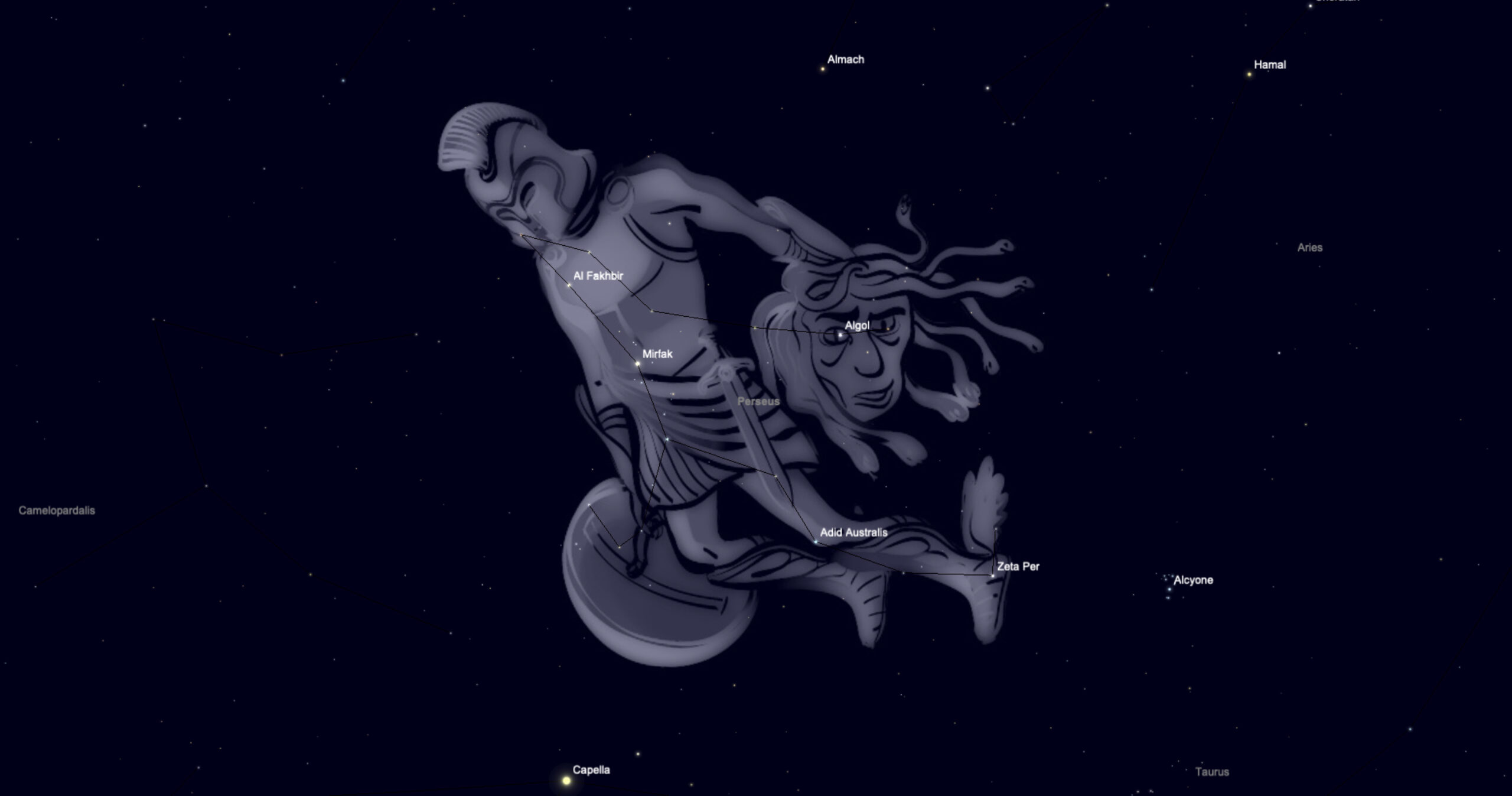
Perseus Constellation – A Hero For Our Skies
Join 13,000+ backyard astronomers for exclusive stargazing content.
Our subscribers receive a detailed weekly guide to the moon and planets, as well as exclusive astronomy content that doesn’t appear on the website.
Press the button below to sign up - don’t miss another week!
PhysicsPedia.blog
How Long Does It Take To Reach Saturn? Unveiling The Journey’s Duration
To reach Saturn, spacecraft must traverse an average distance of 8.5 AU, equivalent to 1.28 billion kilometers or 800 million miles. Using spacecraft speeds ranging from 10 to 50 kilometers per second, the journey would take between 7 to 15 years.
Understanding the Distance from Earth to Saturn: Define astronomical units (AU) and explain their significance. Convert the distance to Saturn into kilometers and miles for easier comprehension.
Understanding the Vastness of Space: A Journey to Saturn
The vast expanse of space beyond our planet can be mind-boggling, especially when considering the immense distances involved. Embark on a cosmic voyage to understand the extraordinary journey to Saturn, the captivating ringed planet that has intrigued astronomers and space enthusiasts for centuries.
Unveiling the Astronomical Unit
In celestial navigation, astronomers use a specialized unit of measurement known as the astronomical unit (AU) to quantify vast distances in our solar system. An AU is defined as the average distance between Earth and the Sun, approximately 149.6 million kilometers (93 million miles). This cosmic yardstick provides a convenient reference point for expressing distances within our celestial backyard.
Saturn’s Orbit in Earthly Terms
Saturn, the sixth planet from our Sun, resides at an average distance of 1.4 billion kilometers (900 million miles) from Earth. This colossal separation equates to about 9.4 AUs. To grasp the magnitude of this distance, let’s convert it into more familiar units:
- Kilometers: 1,400,000,000 kilometers
- Miles: 870,000,000 miles
These numbers paint a picture of the immense gulf between our home planet and Saturn. To appreciate the scale of this cosmic journey, we need to delve into the realm of speed and time.
The Speed of Spacecraft in Various Units: Navigating the Cosmos
As we embark on our interstellar adventures, understanding the vast distances and swift speeds involved is crucial. Spacecraft traversing the cosmos employ various units of speed, each providing a distinct perspective on their breathtaking journeys.
Meters per Second: The Fundamental Measure
At the core lies meters per second (m/s), a fundamental unit measuring the rate at which an object moves. When spacecraft venture into the celestial expanse, their speeds are often expressed in m/s, providing a precise indication of their velocity.
Kilometers per Hour: A Familiar Perspective
To make these cosmic speeds more relatable, we often convert them into kilometers per hour (km/h). This unit resonates with our terrestrial experiences, allowing us to comprehend the speed of spacecraft in terms we can grasp.
Miles per Hour: Bridging the Distance
miles per hour (mph), another familiar unit, helps us bridge the gap between our earthly experiences and the boundless expanse of space. By converting spacecraft speeds into mph, we can visualize their astonishing velocity in a manner that aligns with our own terrestrial perception.
Converting Between Units: Unifying the Language of Space
Navigating the cosmos requires a mastery of these units and the ability to convert seamlessly between them. To unravel the mysteries of space, we must be proficient in the language of speed, translating from one unit to another with ease.
Important Note: The conversion factors between these units are crucial for accurate calculations:
- 1 km/h = 0.621371 mph
- 1 mph = 1.60934 km/h
- 1 m/s = 3.6 km/h
Calculating Time to Travel One Astronomical Unit (AU)
In the vast expanse of our solar system, where celestial bodies dance gracefully, determining the time required to traverse interplanetary distances is crucial for understanding the complexities of space exploration. One fundamental unit of measurement in astronomy is the astronomical unit (AU) , defined as the average distance between Earth and the Sun, approximately 150 million kilometers.
To comprehend the immense scale of this distance, let’s convert it into more familiar units. One AU is equivalent to 93 million miles , a staggering measurement that highlights the vastness of cosmic space.
Imagine embarking on a journey across one AU, traveling at a constant speed of 100 kilometers per second. This incredible velocity, akin to hurtling through space at a mind-boggling 224,000 miles per hour, would still take a remarkable 443 days to complete the journey. Broken down, this translates to 10,632 hours, 637,920 minutes, or a jaw-dropping 38,275,200 seconds .
To illustrate the concept, let’s conduct an example calculation. Suppose a spacecraft were to depart from Earth today, embarking on an ambitious voyage to the nearest star system, Alpha Centauri, located approximately 4.37 light-years away. Traveling at the hypothetical speed of 100 kilometers per second, the spacecraft would require nearly 43,417 years to reach its destination. Such a journey, while currently beyond our technological capabilities, exemplifies the immense challenges and captivating possibilities that lie ahead in the realm of human space exploration.
Calculating the Enormous Distance from Earth to Saturn
Understanding the vastness of the cosmos can be mind-boggling, especially when considering the immense distances between celestial bodies. In this exploration, we’ll embark on a journey to determine the distance from Earth to Saturn, a gas giant that captivates astronomers and space enthusiasts alike. Along the way, we’ll navigate through astronomical units, speed conversions, and time calculations to unravel the mysteries of interplanetary travel.
Astronomical Units: Unraveling the Cosmic Measuring Stick
Before we venture into the depths of space, let’s familiarize ourselves with a crucial concept in astronomy: the astronomical unit (AU). An AU represents the average distance between Earth and the Sun, approximately 150 million kilometers or 93 million miles. It serves as a convenient benchmark for measuring distances within our solar system.
The Dance of Saturn around the Sun
Now, let’s focus on our destination: Saturn, the sixth planet from the Sun. Its celestial waltz around the Sun places it at an average distance of 9.5 astronomical units from Earth. To translate this astronomical measure into more tangible units, let’s do some conversions.
Miles and Kilometers: Bridging the Cosmic Gap
Converting astronomical units to kilometers, we get a staggering distance of approximately 1.43 billion kilometers . That’s a lot of zeros! To put it in miles, the distance to Saturn spans an awe-inspiring 886 million miles . These numbers paint a vivid picture of the vastness of our solar system and the extraordinary distances spacecraft must traverse to reach other planets.
Calculating the Time to Travel to Saturn: Multiply the distance to Saturn in AUs by the time to travel one AU to determine the total travel time. Convert the time to days, hours, minutes, and seconds for clarity.
Calculating the Time to Travel to Saturn
To determine the time it takes to travel to Saturn, we need to first understand the distance involved. Saturn is approximately 9.5 astronomical units (AU) away from Earth. An astronomical unit is the average distance between the Earth and the Sun, or about 150 million kilometers.
To make the distance easier to comprehend, let’s convert it into more familiar units. 9.5 AU is equivalent to approximately 1.4 billion kilometers or 870 million miles. This vast distance poses a significant challenge for space travel.
Next, we need to consider the speed of spacecraft. Spacecraft speeds are typically measured in kilometers per second (km/s). The fastest spacecraft currently in operation, the Parker Solar Probe, can reach speeds of up to 200 km/s.
To calculate the time it takes to travel one astronomical unit, we simply divide the distance of 150 million kilometers by the speed of the spacecraft. For example, at a speed of 200 km/s, it would take approximately 25 days to travel one AU.
Now, to determine the time required to travel to Saturn, we multiply the distance to Saturn in AUs by the time to travel one AU. In this case, 9.5 AU multiplied by 25 days equals 238 days or approximately eight months .
Of course, these calculations assume a constant speed throughout the journey. In reality, spacecraft speed may vary due to factors such as gravity assists and orbital adjustments. However, these estimates provide a reasonable approximation of the time scales involved in space travel to Saturn.
Example Calculations: Provide an example calculation using the latest spacecraft technology and its speed. Show the step-by-step calculation to demonstrate the process.
Understanding the Journey to Saturn: Distance, Speed, and Time
Embark on a cosmic voyage to uncover the vast expanse between Earth and Saturn. This journey requires an understanding of astronomical measurements, spacecraft speeds, and the time dilation involved. Join us as we delve into the complexities of space travel, illuminating the path to our distant celestial neighbor.
Understanding the Distance to Saturn
Astronomers measure cosmic distances in astronomical units (AU) , where 1 AU represents the average distance from Earth to the Sun (approximately 93 million miles). Saturn , our sixth planet from the Sun, resides approximately 9.5 AU from Earth. This vast distance can also be expressed in kilometers (1.43 billion kilometers) or miles (887 million miles).
The Speed of Spacecraft in Various Units
Spacecraft traverse the interstellar void at incredible speeds, demanding different units of measurement. The meters per second (m/s) provides a precise measure, while kilometers per hour (km/h) and miles per hour (mph) offer familiar units for comparison. Understanding these diverse units is crucial for comprehending spacecraft velocities.
The time required to travel one AU depends on the spacecraft’s speed. For instance, at a speed of 30,000 km/h , it would take approximately 39 days to cover one AU. Breaking this down into smaller units, that translates to 936 hours , 56,160 minutes , or 3,369,600 seconds .
Determining the Distance from Earth to Saturn in AUs
As we know, Saturn is 9.5 AU from Earth. Converting this distance into kilometers and miles gives us 1.43 billion kilometers and 887 million miles respectively.
Multiplying the distance to Saturn (9.5 AU) by the time to travel one AU (39 days) yields the total travel time: approximately 371 days . Converting this to smaller units, we get 8,904 hours , 534,240 minutes , or 32,054,400 seconds .
Example Calculations: Using the Latest Spacecraft Technology
Consider the Cassini-Huygens spacecraft , which traveled to Saturn in 2004. It achieved a maximum speed of 20,600 km/h (12,800 mph). Using this speed and the distance to Saturn (9.5 AU), we can calculate the travel time:
Converting to smaller units, the travel time is 11,064 hours , 663,840 minutes , or 39,830,400 seconds .
Our interstellar journey to Saturn reveals the vastness of space and the challenges of space travel. By understanding the astronomical distances, spacecraft speeds, and time scales involved, we appreciate the remarkable achievements of our space exploration missions. As we continue our quest for knowledge and adventure, the allure of distant worlds beckons us to push the boundaries of human exploration.
Carin Cain is an accomplished author with a passion for unraveling the mysteries of the universe through the lens of physics. With a keen intellect and a gift for clarity, Carin navigates the complexities of theoretical and applied physics, making them accessible to readers of all backgrounds. Their expertise spans across various subfields, including quantum mechanics, astrophysics, and relativity. Through engaging prose and insightful analysis, Carin invites readers on a journey through the wonders of the cosmos, shedding light on the fundamental principles that govern our existence. Whether delving into the intricacies of particle physics or exploring the grandeur of the cosmos, Carin Cain's work captivates and inspires, leaving readers with a deeper appreciation for the beauty and complexity of the universe.
Similar Posts
Maximize hvac efficiency: a comprehensive guide to measuring static pressure.
Measuring static pressure involves determining the pressure at a fixed location without considering fluid flow. Piezometers, manometers, pressure gauges, electronic pressure transducers, and piezoelectric pressure sensors are commonly used methods. Piezometers provide a simple and low-cost solution, but their accuracy is limited at low pressures. Manometers offer improved accuracy and can measure higher pressures. Pressure…
Shielding Your Car From Emp Disasters: Ultimate Protection Guide
To safeguard your car from EMPs, consider these steps: Create a Faraday cage by enclosing the vehicle with a conductive material. Shield the exterior with EMP-resistant materials like galvanized steel. Ground the car to dissipate EMP currents. Install Electromagnetic Pulse Protection Devices (EPPDs) to protect sensitive electronics. Test the effectiveness of these measures using an…
Unlock The Power Of Incandescent: Illuminating Words With Captivating Sentences
Incandescence, the emission of light from a heated object, is a fundamental principle behind the glow of incandescent bulbs. The passage of electricity through a filament inside the bulb causes it to heat up, resulting in the emission of light. This warm, nostalgic glow creates a cozy ambiance, reminiscent of vintage lighting. It is commonly…
Mastering Voltage Drop: Understanding Diode Behavior
Diodes are essential components in electronic circuits, playing a crucial role in controlling the flow of current. The voltage drop across a diode refers to the voltage difference between its terminals when current passes through it. The forward voltage drop occurs when current flows in the forward direction, allowing current to flow more easily. In…
Untie That Frustrating Balloon: A Step-By-Step Guide For Knotty Situations
To untangle a balloon, first gently locate and pull on its tie. Gradually loosen the tie while opening the balloon’s neck. Release the air within, then safely remove the tie. Remember to do this slowly and avoid popping the balloon. The Importance of Knowing How to Properly Untie a Balloon In the realm of celebratory…
Maximize Space And Style: Cost-Effective Flooring Options Per Square Meter
Per square meter is a unit of measurement used to express quantities related to the surface area of two-dimensional objects. It is defined as the area of a square with sides measuring one meter. Per square meter is commonly used in fields such as construction, engineering, and textiles to measure surface areas of floors, walls,…
Leave a Reply Cancel reply
Your email address will not be published. Required fields are marked *
Save my name, email, and website in this browser for the next time I comment.

How long does it take to get to each planet?
Last Updated: August 9, 2024
Interplanetary spaceflights have come a long way since Venera 3, the first human-made object to make contact with another planet when it crash-landed on Venus in 1966. Since then, our robotic ambassadors have visited every planet in our solar system, each mission a choreographed dance adapting to the planets’ unique orbital paths.
But as we marvel at these astronomical achievements, we might find ourselves asking a seemingly simple question: How long would it take to reach each planet in our cosmic backyard?
Unsurprisingly, the answer is not set in stone. A planet’s position in its orbital dance can drastically influence travel time, and variables like speed, trajectory, payload weight, and fuel efficiency come into play as well.
If you’ve ever been intrigued by how much of space we’ve explored so far , join us as we delve into the various factors that dictate the time required to reach each planet in our solar system.
- Mercury: ~7 years (average)
- Venus: ~161.25 days (about 5.375 months) (average)
- Mars: ~128 to 360 days (varies per mission)
- Jupiter: ~3 years and 3 months (average for flybys); ~5.5 years (average for orbital missions)
- Saturn: ~6.5/7 years (for orbital missions like Cassini)
- Uranus: 8 years, 5 months (Voyager 2); 13.4 years (proposed for Uranus Orbiter and Probe)
- Neptune: 12 years (Voyager 2)
- Pluto: 9.5 years (New Horizons)
Trave time to Mercury
Mercury is the least visited planet in the solar system. To this day only 3 missions made it to the closest planet of the solar system : Mariner 10, MESSENGER and Bepi-Colombo.
- Mariner 10 took 147 days to reach Venus (4 months and 27 days).
- Messenger took 7 years to reach Mercury.
- Bepi-Colombo will take 7 years too, it’s currently 5 years into its journey.
Now you may think, why does it take so long to reach a planet that’s not that far away from Earth . Though Earth is on average ten times closer to Mercury than to Jupiter, missions to both planets can take a similar amount of time due to the complexities involved in entering Mercury’s orbit.
When approaching Mercury, a spacecraft speeds up due to its proximity to the Sun and needs to shed significant orbital energy to slow down. Achieving this using only thrusters would require impractical amounts of fuel.
Instead, spacecraft use gravity-assist manoeuvres, involving flybys of other planets, to alter speed and trajectory without consuming fuel. This technique, however, necessitates careful planning and multiple flybys, making the journey lengthy. Italian mathematician Giuseppe ‘Bepi’ Colombo pioneered the concept of using planetary flybys for trajectory alteration.
On average, it takes a spacecraft about seven years to travel to Mercury, become captured by the planet’s gravity, and enter a stable orbit around it.
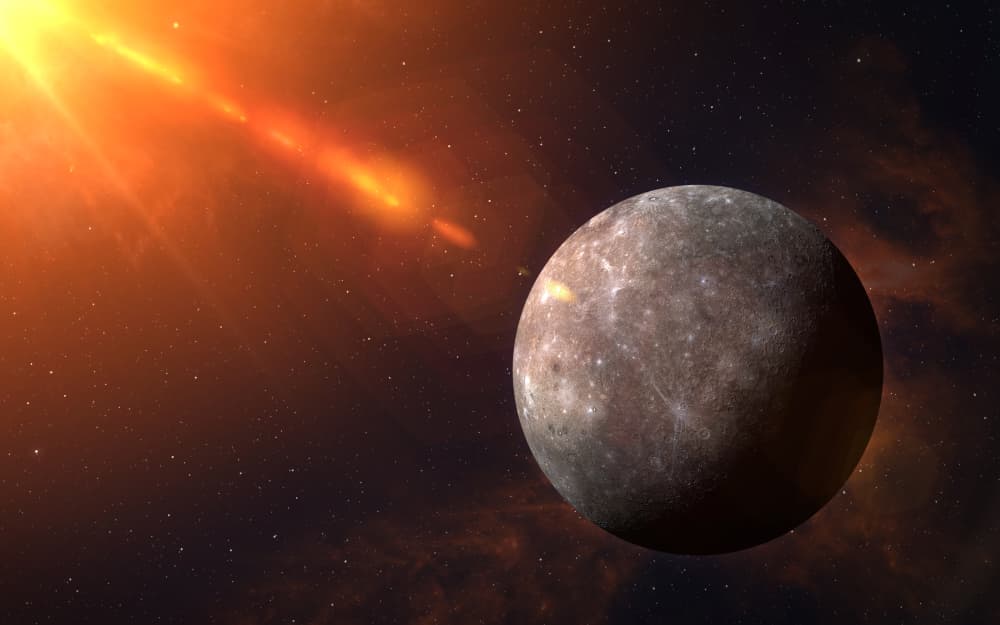
Trave time to Venus
With 46 space missions aiming to either flyby, land, impact or orbit Venus , it safe to say that Earth’s twin planet is a more popular destination for astronomers. To this day, it is the most visited planet by mankind and the first planet on which we have soft landed a spacecraft on (Venera 7).
In order to estimate the time it takes to reach Venus, I examined data from only landers and orbiters and calculated an average time of 161.25 days or about 5.375 months.
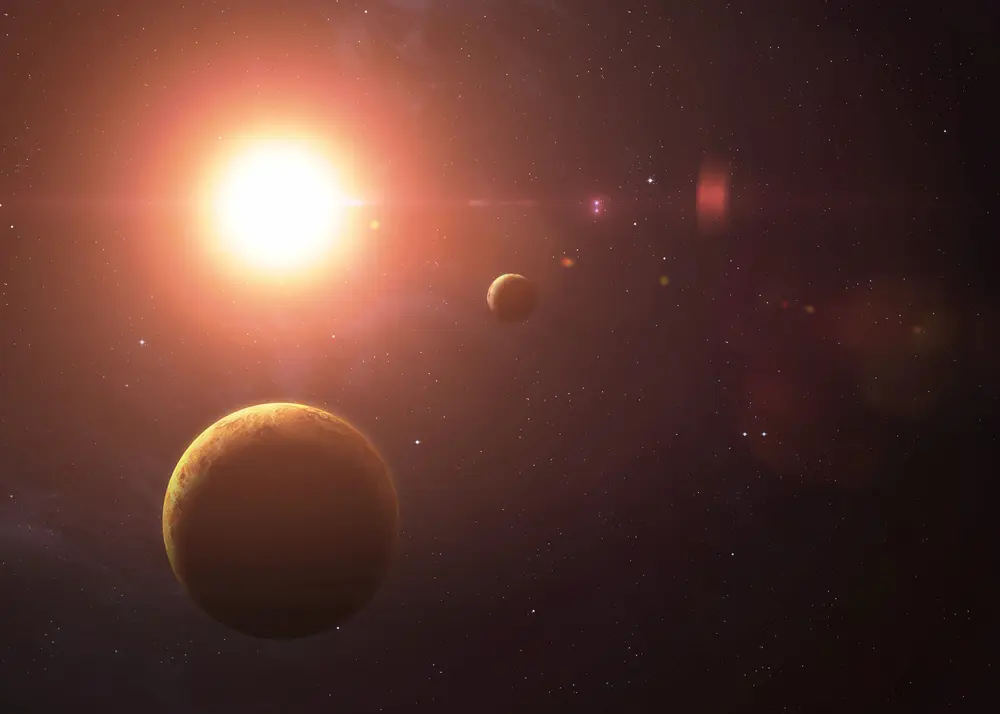
Trave time to Mars
The time it takes to get to Mars is influenced by various factors including the planets’ positions in their orbits, the spacecraft’s speed, and its trajectory. Both Earth and Mars have elliptical orbits, with Mars being an average distance of 140 million miles away from Earth . They come closest every two years at approximately 33.9 million miles apart.
The optimal window for launching missions to Mars occurs once every 26 months, and travel times for past missions have varied between 128 to 360 days, based on different launch windows and mission profiles. NASA estimates that, with current technology, a mission to Mars would take around nine months when the planets are properly aligned.
Flight time of past missions to Mars
- Mariner 4 (1964) had a flight time of 228 days.
- Mariner 6 (1969) got to the red planet in 156 days.
- Mariner 7 (1969) got to Mars in 128 days.
- Mariner 9 (1971) reached the red planet in 167 days.
- Viking 1 (1976) took on an 11-month cruise to Mars.
- Viking 2 (1976) had a flight time of 360 days.
- Mars Odyssey (2001) reached the dusty planet in about 200 days.
- Mars Express (2003) completed its journey in around 6 months.
- Opportunity Rover (2003) landed on Marse after 201 days spent in space.
- Spirit (2003) touched down in Gusev crater after traveling for 179 days.
- Mars Reconnaissance Orbiter (2005) took 210 days to reach its destination.
- Phoenix (2007) completed its travel to Mars in 295 days
- Curiosity (2011) touched down on the martian surface after a trip lasting 253 days.
- MAVEN (2013) entered the martian orbit after a 10-month trip.
- Insight (2018) reached Mars in 206 days.
- Perseverance , the latest rover to make it to Mars , did the trip Earth-Mars in 204 days.
More information here: How Long Does it Take to Get to Mars?
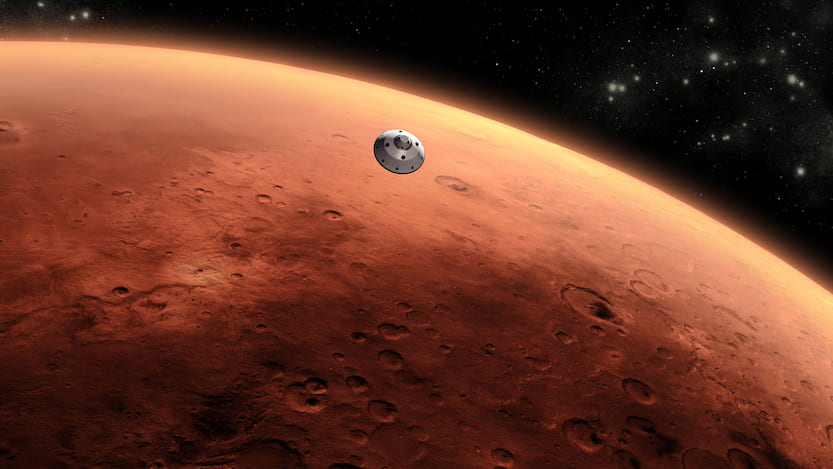
Trave time to Jupiter
Jupiter is, on average, about 484 million miles (778 million kilometers) away from Earth . This vast distance poses challenges in terms of propulsion, energy, and communication. Many missions to Jupiter used gravity assists from other planets (especially Venus and Earth) to increase their speed and save fuel.
This spaceflight maneuver allows a spacecraft to pass close to a planet and utilise its gravitational field in order to gain speed. Planning and executing these maneuvers adds complexity to the mission.
On average, based on all past missions, the average travel time to Jupiter is approximately 3 years and 3 months. However, the large majority were just flybys by spacecrafts going much further in the solar system.
Only 2 missions actually stopped at Jupiter so far: Galileo (flew for 6 years and 2 months) and June (flew for 5 years) so the actual time to reach Jupiter is closer to the 5 years and a half mark.
Flight time of past and future missions to Jupiter
- Pioneer 10 took 1 year and 9 months to reach Jupiter.
- Pioneer 11 journeyed to Jupiter in 1 year and 8 months.
- Voyager 1 arrived at Jupiter after a travel period of 1 year and 6 months.
- In 1 year and 11 months, Voyager 2 made its way to Jupiter.
- Galileo had a journey duration of just under 6 years and 2 months to Jupiter.
- The trip to Jupiter for Ulysses was completed in 1 year and 4 months.
- Cassini reached Jupiter in 3 years and 2.5 months.
- Juno had a voyage to Jupiter lasting just under 5 years.
- New Horizons set the record with a swift journey to Jupiter in just over 13 months.
- Juice, an upcoming mission, is projected to take approximately 7.5 years to Jupiter.
- Another future mission, Europa Clipper, is anticipated to reach Jupiter in approximately 5.5 years.
More information here: How long would it take to reach Jupiter?
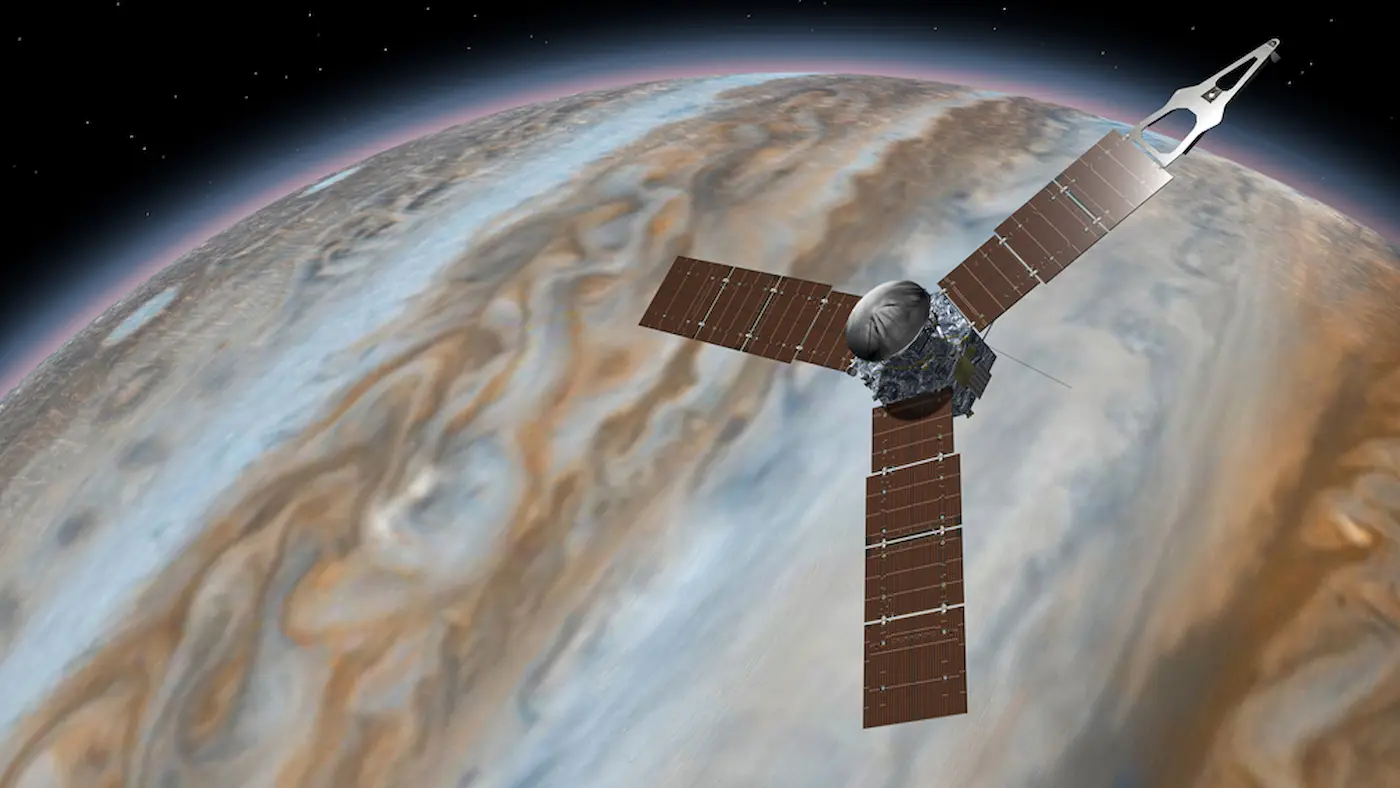
Trave time to Saturn
Imagine this: Jupiter is a staggering 778,600,000 km from the Sun, while Saturn lies even further at 1,433,500,000 km away . So, if you thought Jupiter was distant, you’d have to travel nearly twice as far to reach Saturn. And remember, Saturn is only the sixth of the eight planets in our solar system!
There have been 4 missions that have either included Saturn in their flight plan or had it as the final destination and one of note sped past it on its way to the edge of the solar system.
- Voyager 1: Launched on September 5, 1977, Voyager 1 reached Saturn in November 1979, taking approximately 3 years and 2 months.
- Voyager 2: Launched on August 20, 1977, Voyager 2 arrived at Saturn on August 26, 1981, taking around 4 years to reach the planet.
- Cassini: Launched on October 15, 1997, Cassini entered orbit around Saturn on June 30, 2004, taking nearly 6 years and 9 months for the journey.
- New Horizons: Launched on January 19, 2006, New Horizons crossed Saturn’s orbit on June 8, 2008, which is approximately 2 years and 4 months after launch, although it didn’t specifically study Saturn.
Three of the aforementioned spacecrafts executed flyby trajectories past Saturn, with only Cassini undertaking orbital insertion around the ringed planet. So the most accurate time to reach Saturn is more likely to be around the the 6.5/7 years as it takes a considerable time to decelerate and manoeuvre a spacecraft to facilitate gravitational capture by the planet.
More information here: How long would it take to reach Saturn ?
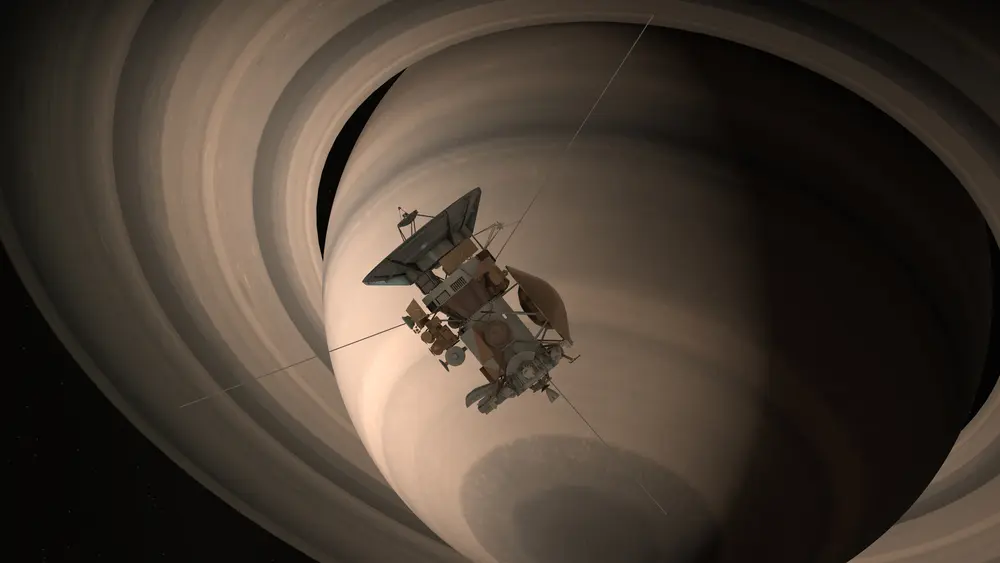
Trave time to Uranus
Only one spacecraft has visited Uranus: Voyager 2. The Voyager spacecraft (1 and 2) were created to perform a “Grand Tour of the Outer Solar System”. Due to budget and other concerns, the missions were whittled down, but still took advantage of a rare planetary alignment to study the outer solar system before heading into interstellar space.
From launch to flyby of Uranus was from Aug. 20, 1977 to Jan. 24, 1986 (eight years, five months) for Voyager 2, but it’s important to remember that it included a gravity assist from Jupiter and a unique line-up of planets that helped to greatly reduce the travel time.
The Uranus Orbiter and Probe is a proposed joint NASA and ESA mission to study Uranus, including deploying a probe into its atmosphere to gather data. The original proposed flight plan listed a launch date of 2031 or 2032 utilizing a Falcon Heavy expendable launch vehicle which would take 13.4 years to reach Uranus (in 2044 or 2045) utilizing a gravity assist from Jupiter. This mission is yet to be finalized and approved, as it is still in the conceptual stage.
More information: How long does it take to travel to Uranus?
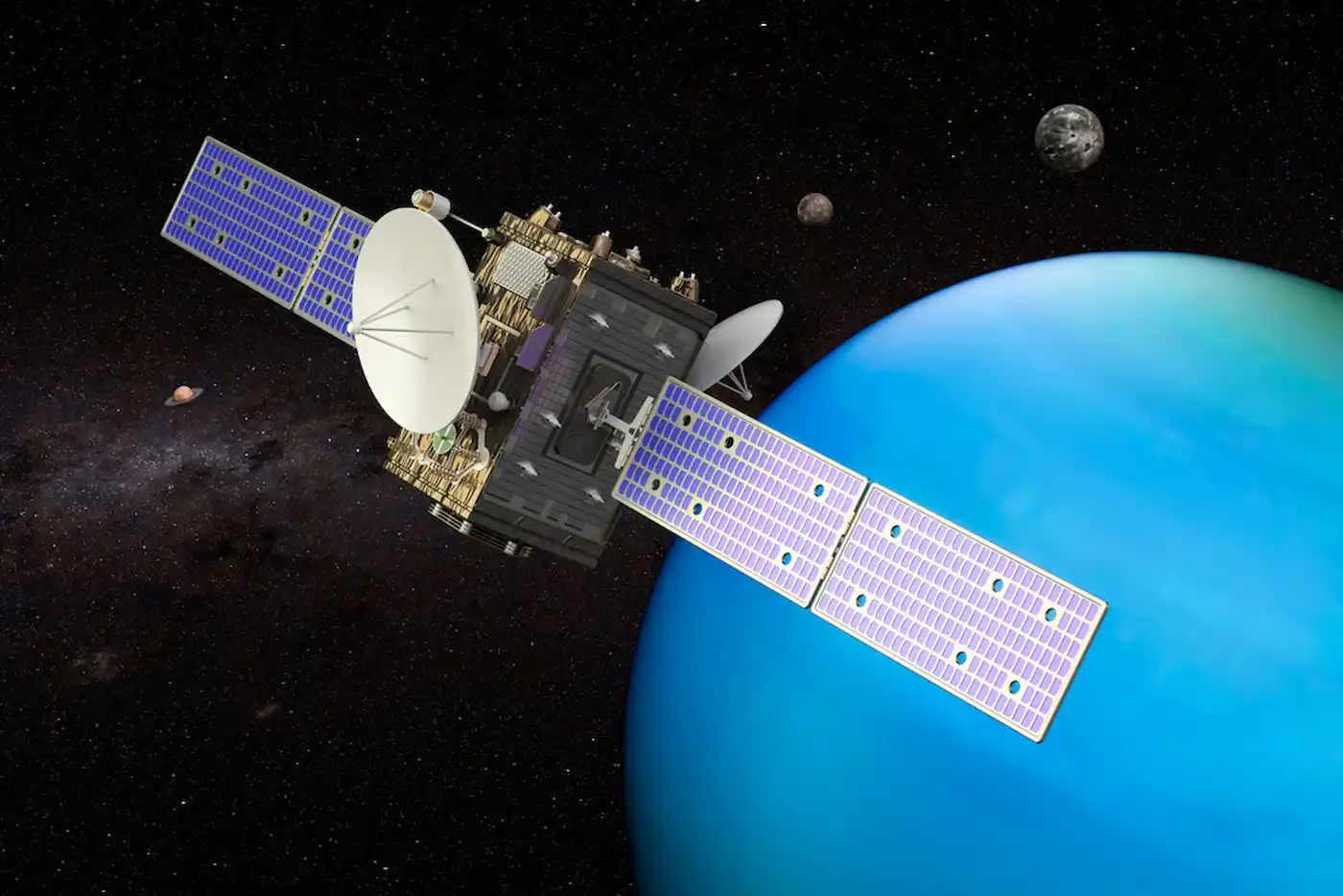
Trave time to Neptune
Similarly to Uranus, Neptune has yet to be the sole object of a space mission. The only spacecraft to ever cross paths with the cerulean planet, Voyager 2, took 12 years to reach it—requiring an additional 3 years and 7 months of travel time from its Uranus flyby.
Regrettably, there are no space missions presently scheduled for the exploration of Neptune. Consequently, our only reference for travel duration to the distant planet is the 12 years taken by Voyager 2, which, notably, ranks as the fifth fastest spacecraft in history with a speed of 55,570 km/h (34,530 mph).
More Information: How far is Neptune right now?
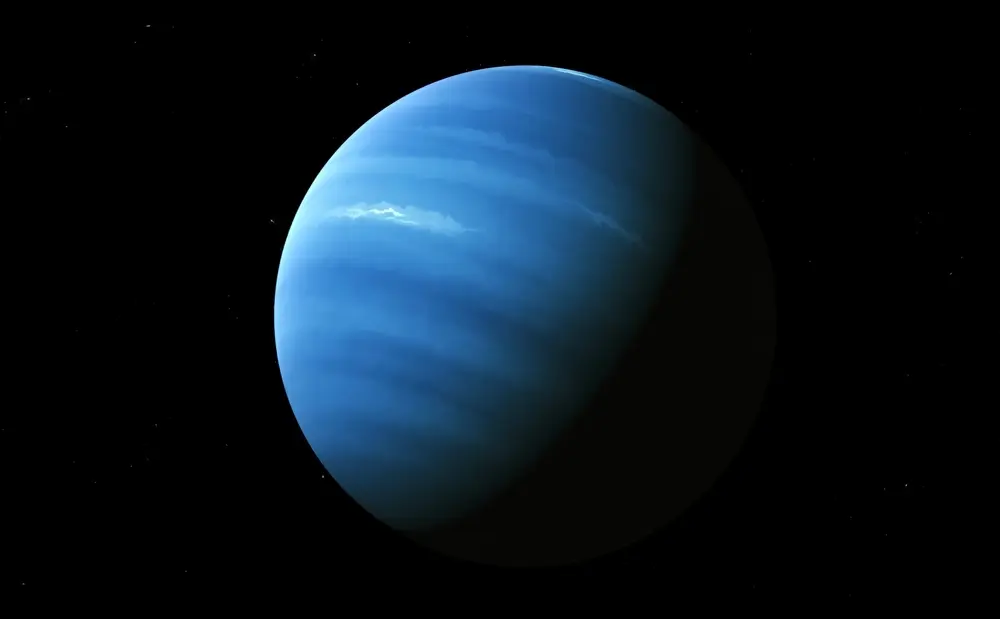
Trave time to Pluto
To the dismay of the International Astronomical Union (IAA), I still consider Pluto as something more than a dwarf planet. So I decided to add it to my list 🙂
Pluto is located at the very edge of the outer solar system and therefore has not been the target of space missions very often. Actually, only one spacecraft ever flew by it: New Horizons.
Traveling at a phenomenal speed of 57,936 km/h, New Horizon still took 9.5 years to travel the 5.05 billion kilometers / 3.1 billion miles that lie between Earth and Pluto! That’s seven times the distance to Jupiter and 3 times the distance to Saturn!
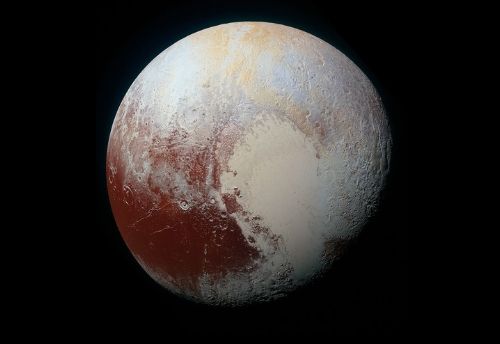
Bottom Line
The journey to each planet in our solar system presents a unique set of challenges, from the relatively short jaunts to Venus and Mars, to the prolonged and resource-intensive missions to the outer giants like Jupiter and Saturn.
These timelines, governed by the laws of physics, the capabilities of current propulsion technologies, and the planetary alignments, serve as both opportunities and limitations in our quest to explore the universe.
Projects like the development of nuclear propulsion or breakthroughs in theoretical physics could potentially revolutionize our approach to space travel, radically altering the timescales in ways we can barely imagine today.
Whether we’re considering robotic explorations or pondering the prospects of human settlement on distant worlds, the issue of flight time presents constraint that both challenges and inspires aerospace engineers to innovate and push the boundaries of what’s possible.

Written by Tom Urbain
I’ve been fascinated by space and astronomy from a very young age. When I’m not watching space-themed documentaries, movies or TV series, I spend most of my free time in my backyard admiring the planets and galaxies with my telescope.
Wow! There's more to read 🚀
This page is part of our collection of astronomy articles . If you enjoyed the read, then you’ll love the following articles.
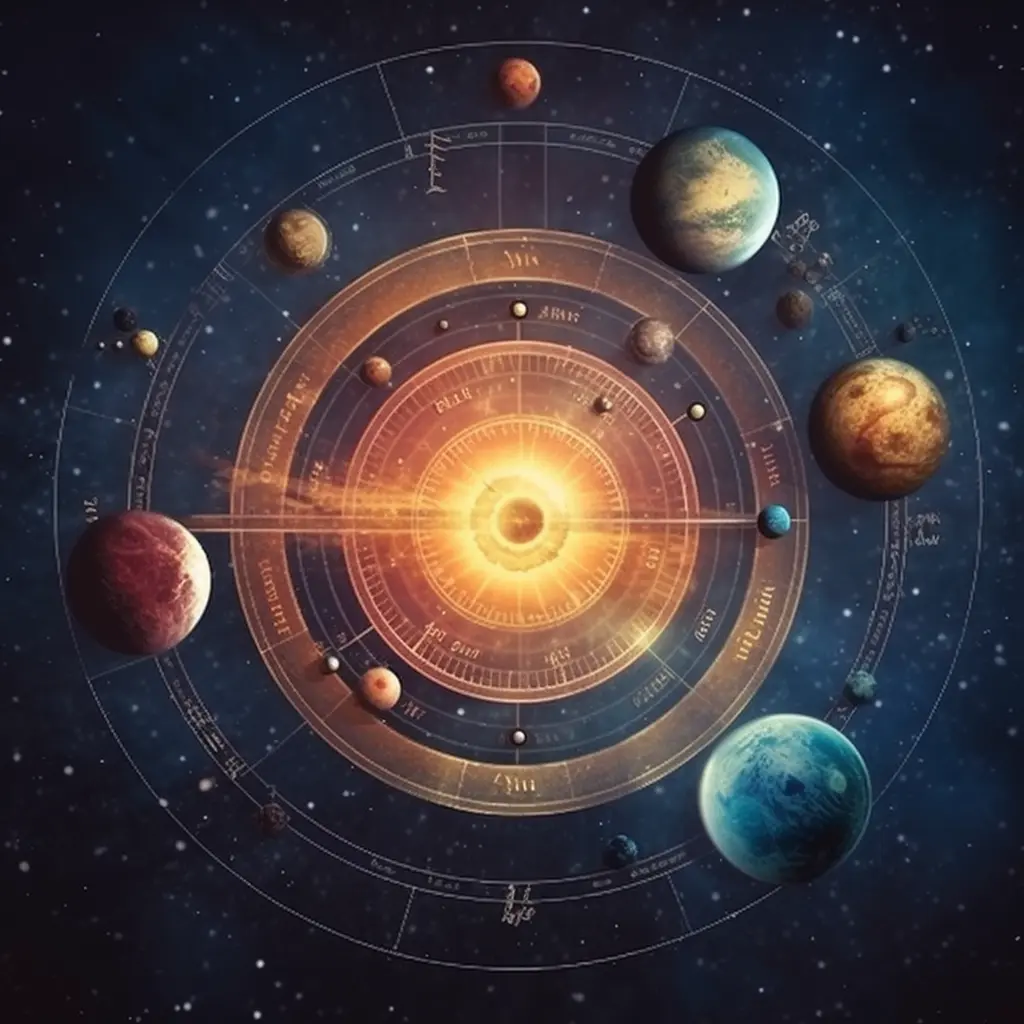
Planetary Time: How long is a day on each planet and Why
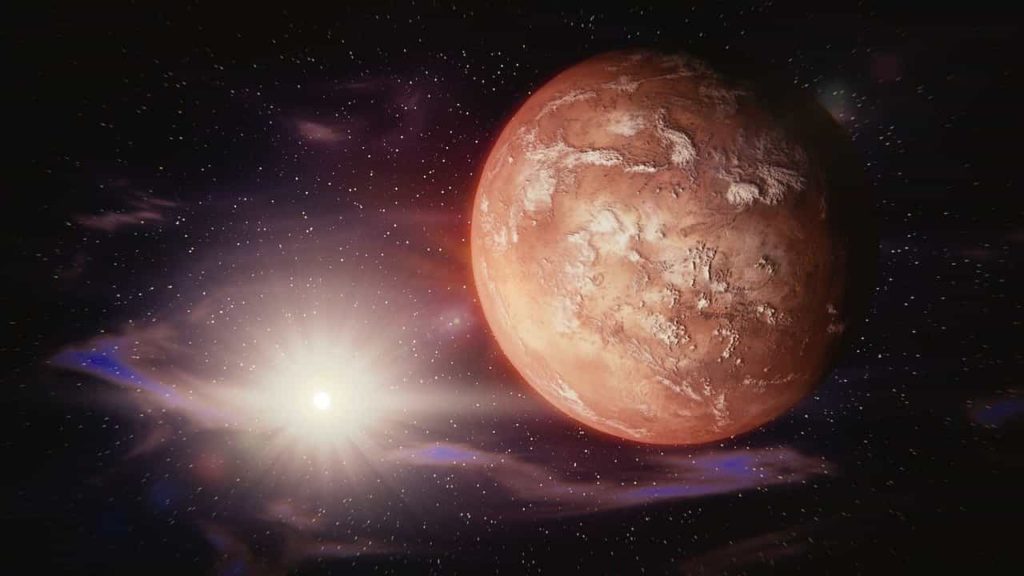
What are the differences between a star and a planet?
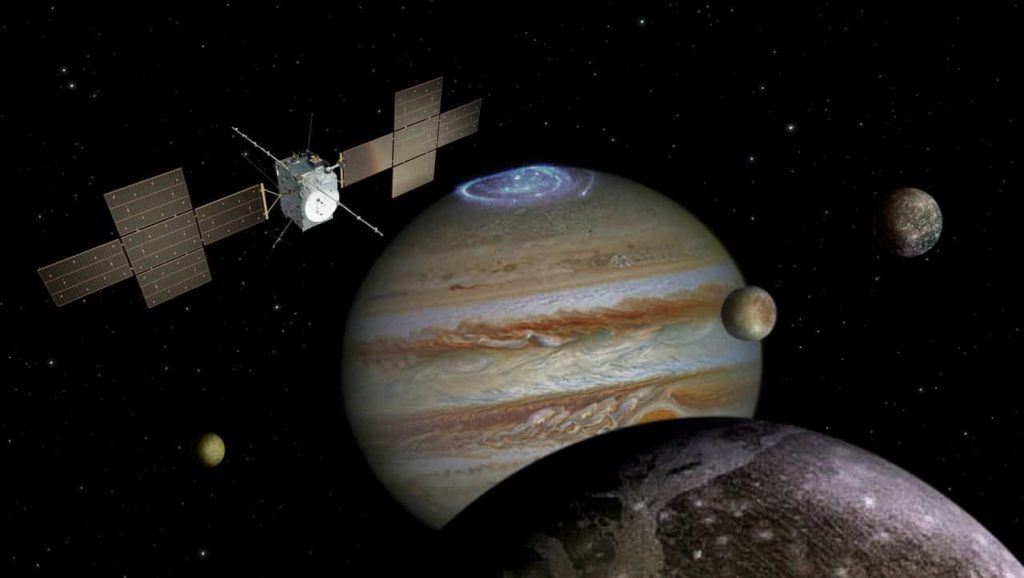
Attraction Heavyweight: Which Planet Has The Strongest Gravity Field?
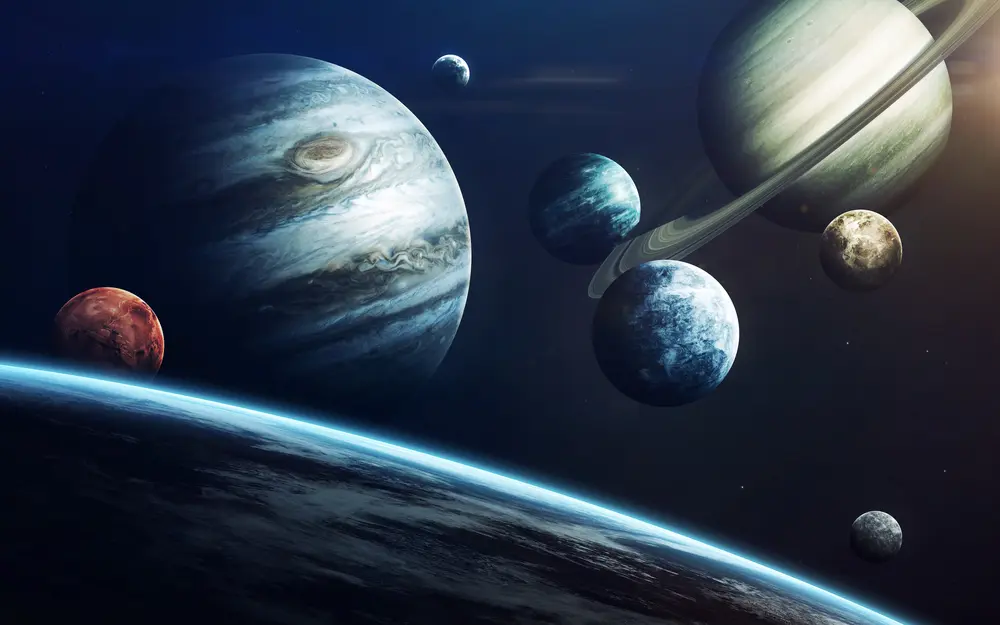
Inner planets VS Outer planets: What sets them apart?

How Long Would It Take To Get To Saturn?

Getting to Saturn from Earth takes about 2.5 years if you take the quickest route. Although they can be as close as 746 million miles apart, traveling at light speed would make this trip just 1 hour and 6 minutes long!
Imagine a spacecraft traveling at an average speed of 16,150 miles per hour. It would take 5.3 years to reach Saturn. Using the fastest spacecraft available, speeding at 430,000 miles an hour, the journey would be a little over 2 months and 1 week.
What Is the Farthest Distance From Earth to Saturn?
The longest distance from Earth to Saturn is 900 million miles. This is about half the distance to Pluto. Traveling at the speed of light, it would take 44 minutes. Using the fastest spacecraft at 428,700 miles an hour, it would take around 2.9 months to reach Saturn.
Space Missions to Saturn
Voyager 1 holds the record for the quickest journey between Earth and Saturn, covering the distance in three years (1977 to 1980). This mission gave us an extraordinary amount of information about Saturn and its moons.
Other missions to Saturn, like the Cassini mission launched in 1997, took even longer. Cassini spent seven years reaching Saturn. Despite the long trip, it gave us invaluable details about Saturn, its rings, and its moons, providing data we couldn’t have gotten any other way.
Related Posts:
- How Long Would It Take To Get To Venus?
- How Long Would It Take To Travel A Light Year
- How Long Do Black Holes Last?
- How Long Does A Solar Eclipse Last?
- How Long Does Sunrise And Sunset Last?
- What are the main challenges of long-term space missions?
The Planets
How long would it take to get to Saturn?
Saturn, the sixth planet and second Gas Giant from the Sun in our Solar System, is a pretty majestic site to see. The first time you lock eyes on it through a reasonable telescope, catch sight of it's rings, it really is a special feeling. Despite it's majesty, Saturn is a very hostile place.
There is no solid surface as such, constant storms and a toxic atmosphere. But there is much to learn from this Giant and it’s abundant moons. Could one of Saturn’s moons even have the ability to host some form of life? This is a planetary system worthy of much more study, but exactly how long would it take to get to Saturn ? And are there any missions in progress or planned? Let’s explore!
Saturn – Quick Facts
- Average Distance From The Sun: 1,424,600,000 km (885,205,400 mi)
- Radius: 60,268 km (37,448 mi)
- Temperature: -138 °C (-218 °F)
- Day length : 10.7 Earth hours
- Year length : 29 Earth years
- Number of moons : 82
- Closest Distance to Earth: – As close as 1.21 Billion km in Opposition.
- Furthest distance to Earth: – As far as 1.7 Billion km at superior conjunction.
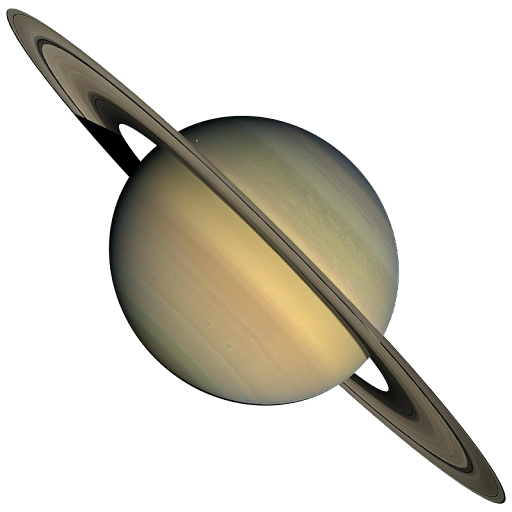
How far is Earth from Saturn?
To determine how far the Earth is from Saturn, we need to take into account where each of the planets are in respect to their orbit of the Sun. The closest that Earth and Saturn approach each other is when both planets are in opposition. Opposition happens when Earth moves between an outer planet, like Saturn, and the sun. This happens around once every year (on average every 378 days). The closest approach that these planets can make, is when they are aligned, Saturn is at its closest position to the sun ( perihelion ) and Earth is at its farthest ( aphelion ).
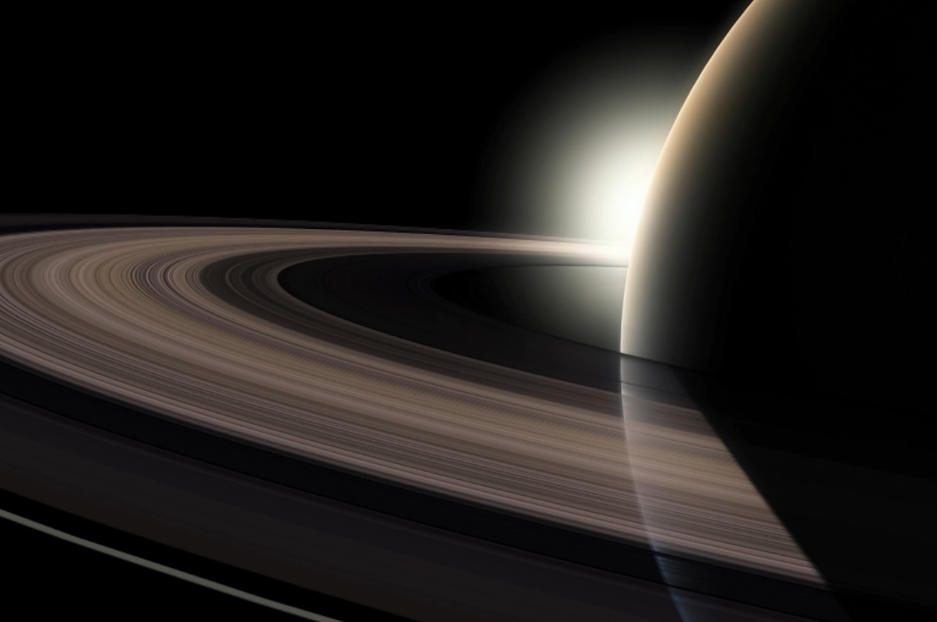
At it’s farthest, Saturn can be as distant as around 1.7 billion km from Earth. This happens when the planets are on different sides of the sun to each other. At it’s closest, it can be as far as around 1.2 billion km from Earth. As the orbit of Saturn and Earth are elliptical, they do change slightly over time. So these closest and farthest distances expand and contract over time.
How Long Would it Take to Get to Saturn?
The time it takes light to travel between Saturn and Earth at average distance, is around 1 hr 20 min 15 secs. But of course we can’t travel at the speed of light. In terms of satellite missions we have sent or planned there are a few results. Mission travel time can very greatly depending on the nature of the visit. Conducting a flyby can have a considerably shorter flight time than missions that have greater goals.
The fastest flyby took a little over 3 years and 2 months, whereas the only orbiter to be sent so far took more than double that time to arrive and settle into orbit around the planet.
What is the Shortest Trip?
The shortest journey to Saturn so far, was achieved with the flyby of Voyager 1. Launched on 5th September 1977 and conducting its closest approach of Saturn on 12th November 1980. So the flight time for conducting this flyby was 3 years 2 months and 8 days. Voyager 1 and it’s sibling Voyager 2 were both launched to explore the outer solar system and are still out there pushing boundaries of our knowledge to this very day. Having long exceeded their mission parameters, both craft are now on their way out of our solar system.
How Often Does The Closest Approach Occur?
The closest approach between the Earth and Saturn, happens approximately every 378 days. From our perspective here on Earth, it happens around 11 – 15 days later each year, moving through the seasons. While an orbit of the Earth around the Sun takes 1 year, for Saturn, it takes the equivalent of just over 29 Earth years.
Missions To Saturn
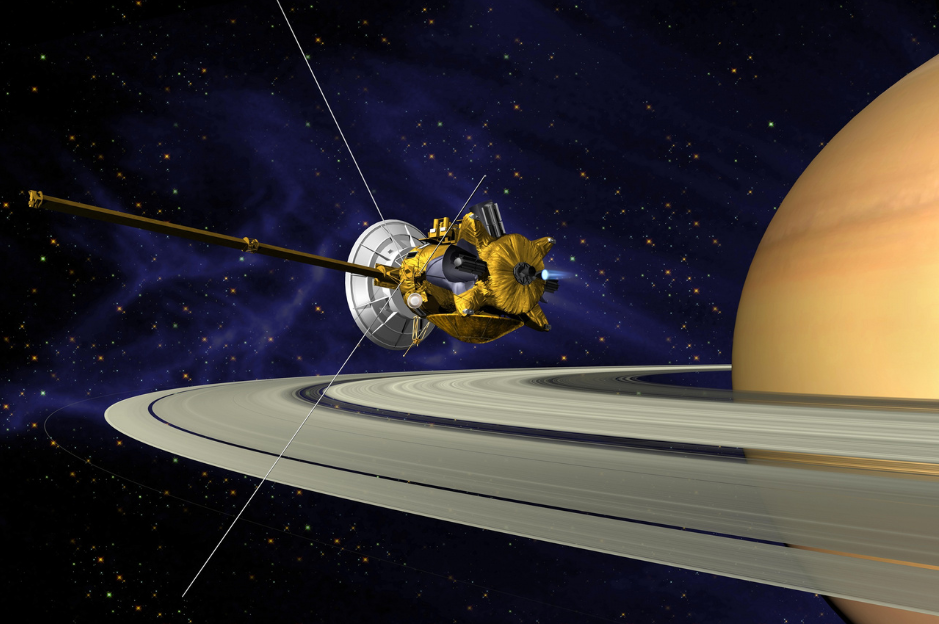
There have been four missions to Saturn so far:
At the end of it’s operational life, the Cassini craft was lowered toward the planet to conduct it’s grand finale. In this maneuverer the craft was intentionally dropped into the atmosphere of Saturn to burn up and prevent it from eventually colliding with any of the numerous moons. The craft lasted longer than expected but eventually succumbed to the atmosphere and burned up.
Are There Any New Missions Planned?
There is one mission currently in development for a return to the Saturnian system, and it is an exciting one. The Dragonfly mission has the moon Titan as it’s primary target, and will be involved in looking for the starting ingredients for life. Titan’s atmosphere is very similar to that of the young Earth 3.5 Billion years ago , when the very first single cell organisms started to develop on our planet. This mission offers a rare opportunity to observe how these organic molecules started the chain reaction that eventually led to complex life.
The surface of the moon will be explored with a rotorcraft which will take small flights around the surface, for which a flight path has already been largely developed. Data from the previous Cassini mission have helped the scientists in charge create a solid mission plan, and this will definitely be one to look out for. The mission is expected to launch around 2026/2027 and arrive in 2034/2035.
How Far Is Saturn From The Other Planets?
The following are average distances between Saturn and the other planets in the Solar System :
- Distance From Saturn to Mercury: 849,000,000 Miles
- Distance From Saturn to Venus: 818,000,000 Miles
- Distance From Saturn to Mars: 744,000,000 Miles
- Distance From Saturn to Jupiter: 402,000,000 Miles
- Distance From Saturn to Uranus: 900,000,000 Miles
- Distance From Saturn to Neptune: 1,911,674,960 Miles, 3,076,400,000 Km
Link/cite this page
If you use any of the content on this page in your own work, please use the code below to cite this page as the source of the content.
<a href="https://theplanets.org/how-long-would-it-take-to-get-to-saturn/">How long would it take to get to Saturn?</a>
Stewart, Suzy. "How long would it take to get to Saturn?". The Planets . Accessed on November 21, 2024. https://theplanets.org/how-long-would-it-take-to-get-to-saturn/.
Stewart, Suzy. "How long would it take to get to Saturn?". The Planets , https://theplanets.org/how-long-would-it-take-to-get-to-saturn/. Accessed 21 November, 2024.

IMAGES
VIDEO
COMMENTS
In the past spacecraft have taken greatly different amounts of time to make it to Saturn. Pioneer 11 took six and a half years to arrive.
At its closest approach to Earth, Saturn is 746-million miles (1.2-billion kilometres) away. At this distance, it would take you 622-days or 1.7-years to reach Saturn. Uranus and Neptune Neptune is the furthest planet from the Earth. Image credit: NASA/JPL. Beyond Jupiter and Saturn are the two outermost planets of our solar system, Uranus and ...
As we have seen, the travel time to Saturn greatly depends on the route, launch vehicle, gravity assists, and method of arrival. However, the general estimate for if we launched a probe today would be 4-7 years.
Discover the time it takes to journey through space from Earth to Saturn. Explore factors influencing the travel time and learn about our progress.
At its average distance of 1.4 billion km, light takes one hour 20 minutes and 15 seconds to reach Saturn from Earth. As the planets orbit the Sun, this time varies between 1 hour 6 minutes 47 seconds and 1 hour 32 minutes 34 seconds.
To reach Saturn, spacecraft must traverse an average distance of 8.5 AU, equivalent to 1.28 billion kilometers or 800 million miles. Using spacecraft speeds ranging from 10 to 50 kilometers per second, the journey would take between 7 to 15 years. Understanding the Distance from Earth to Saturn:
So the most accurate time to reach Saturn is more likely to be around the the 6.5/7 years as it takes a considerable time to decelerate and manoeuvre a spacecraft to facilitate gravitational capture by the planet.
Question: How long does it take to fly to Saturn? Answer: How long it takes to travel anywhere depends on how far you want to go and how fast you move. For example, if you want to travel to the store located 10 km from your house, and you drive at 50 km/hr, it would take you 10/50 hours to get there (in other words, 1/5 of an hour or 12 minutes).
The longest distance from Earth to Saturn is 900 million miles. This is about half the distance to Pluto. Traveling at the speed of light, it would take 44 minutes. Using the fastest spacecraft at 428,700 miles an hour, it would take around 2.9 months to reach Saturn.
The time it takes light to travel between Saturn and Earth at average distance, is around 1 hr 20 min 15 secs. But of course we can’t travel at the speed of light. In terms of satellite missions we have sent or planned there are a few results.